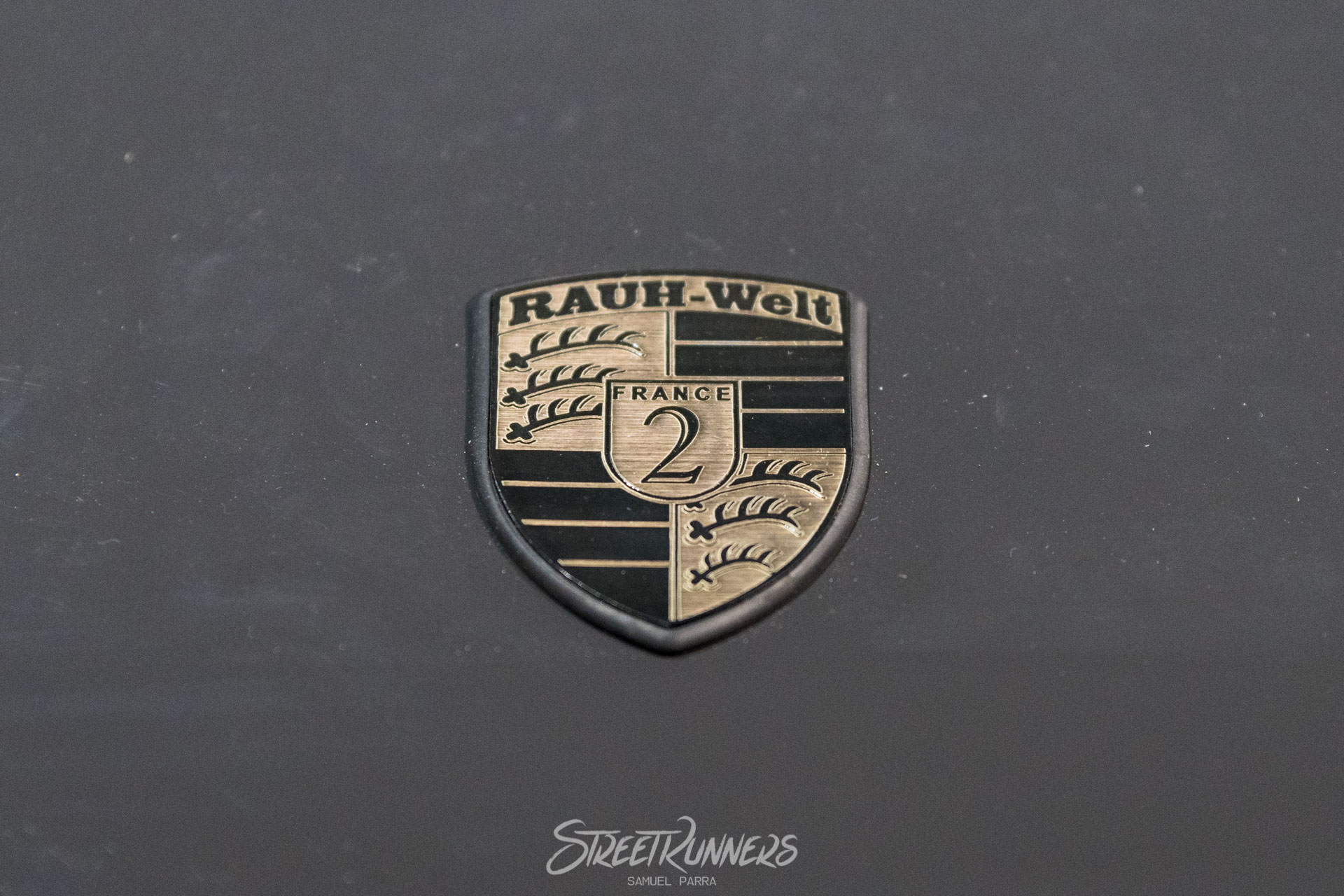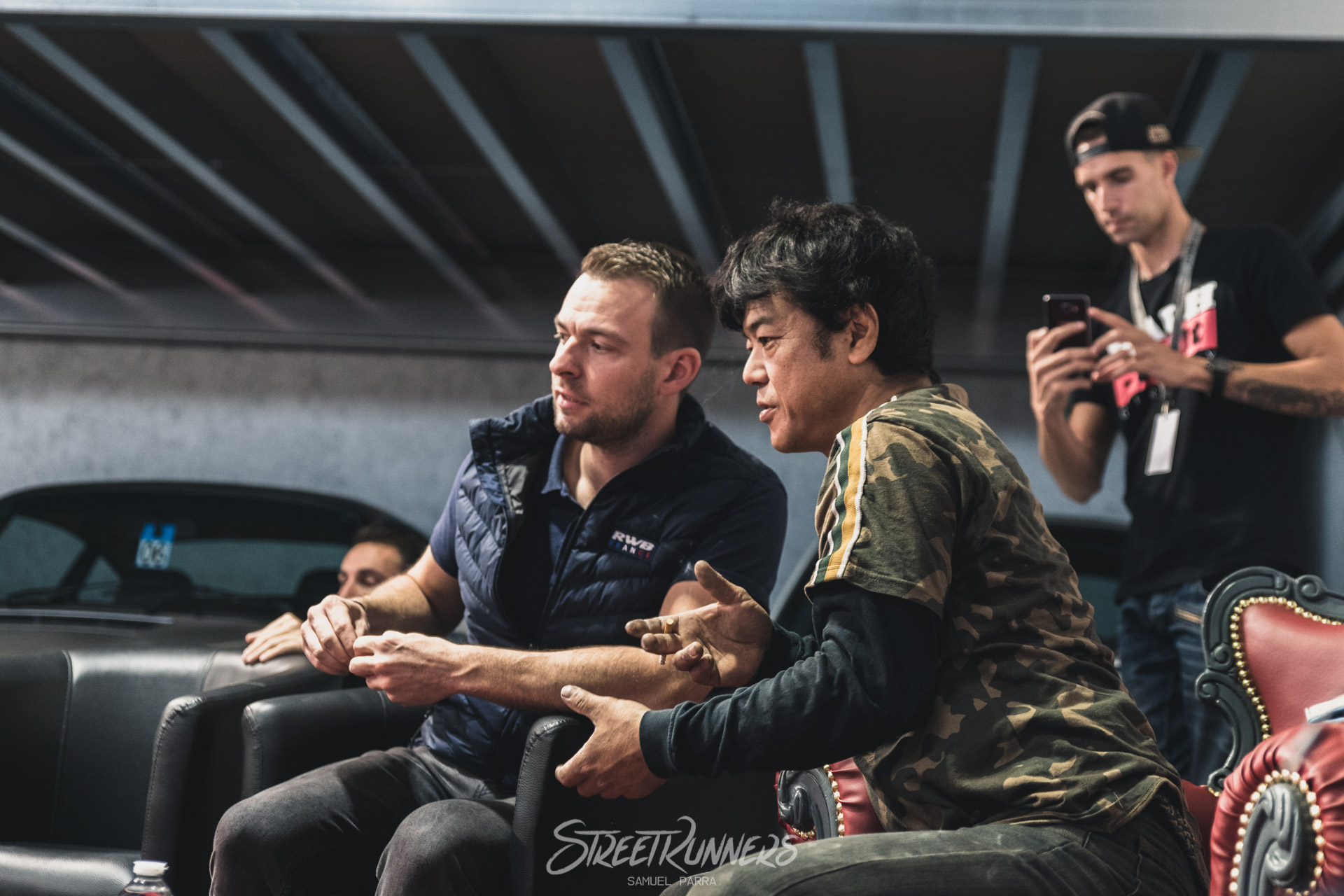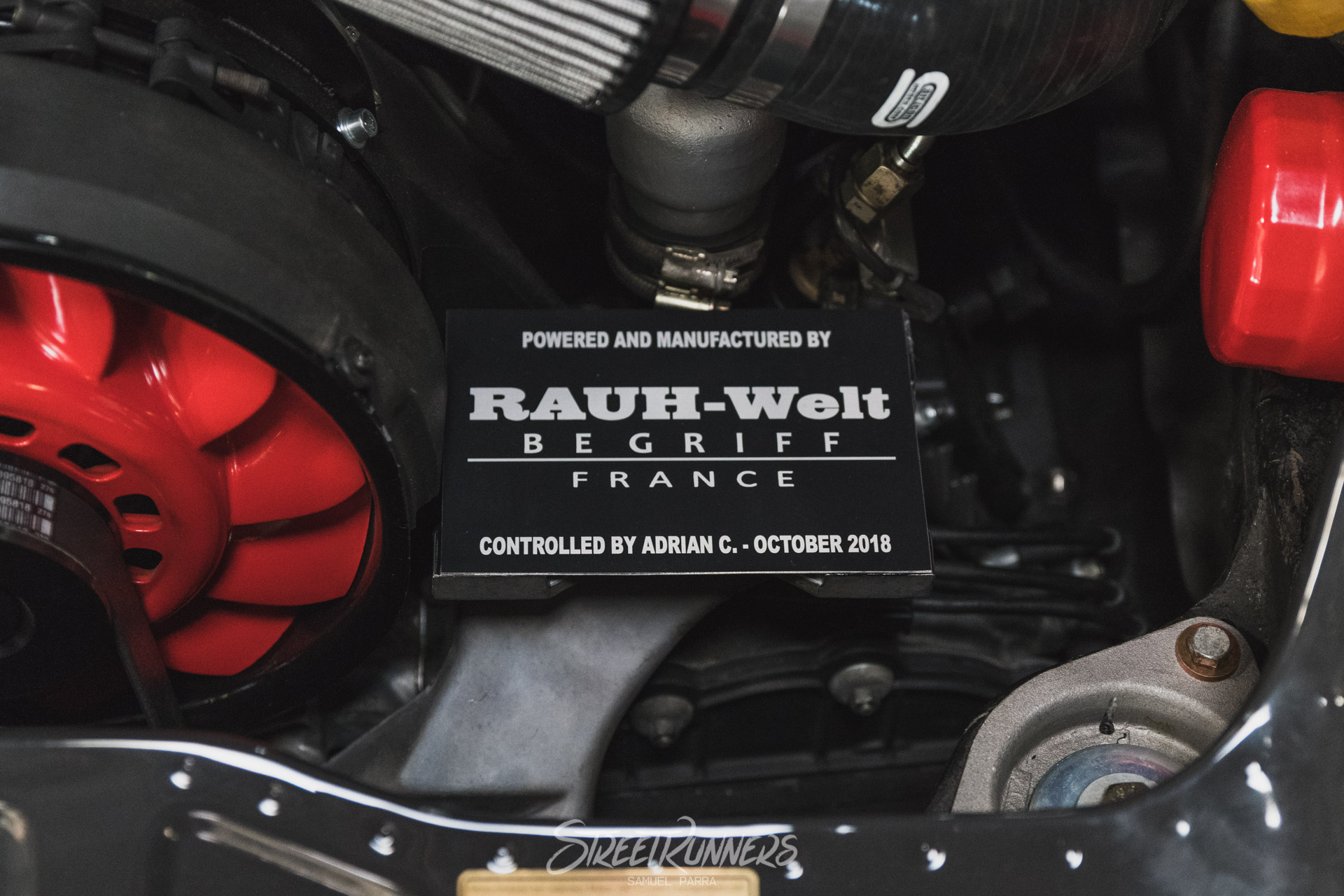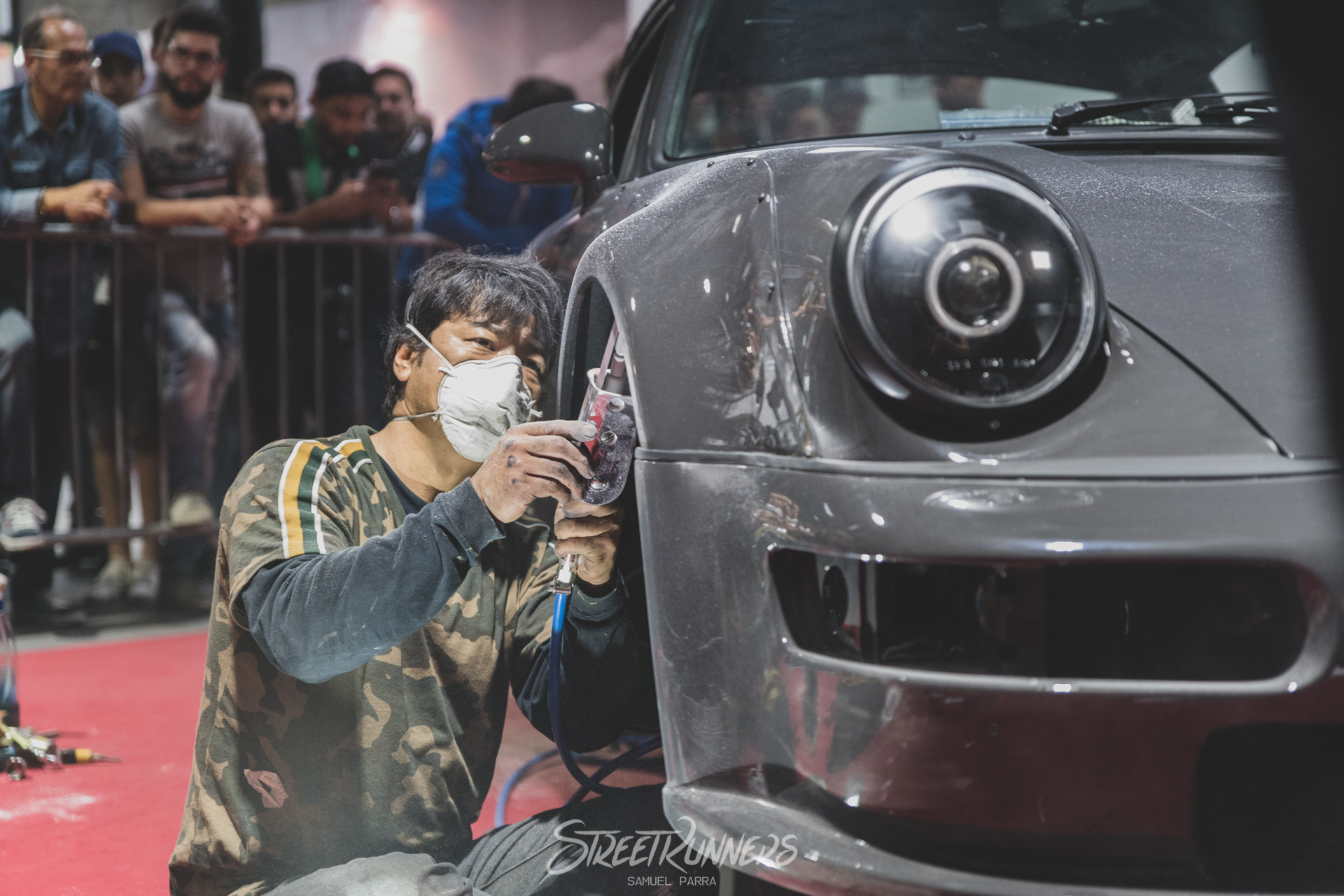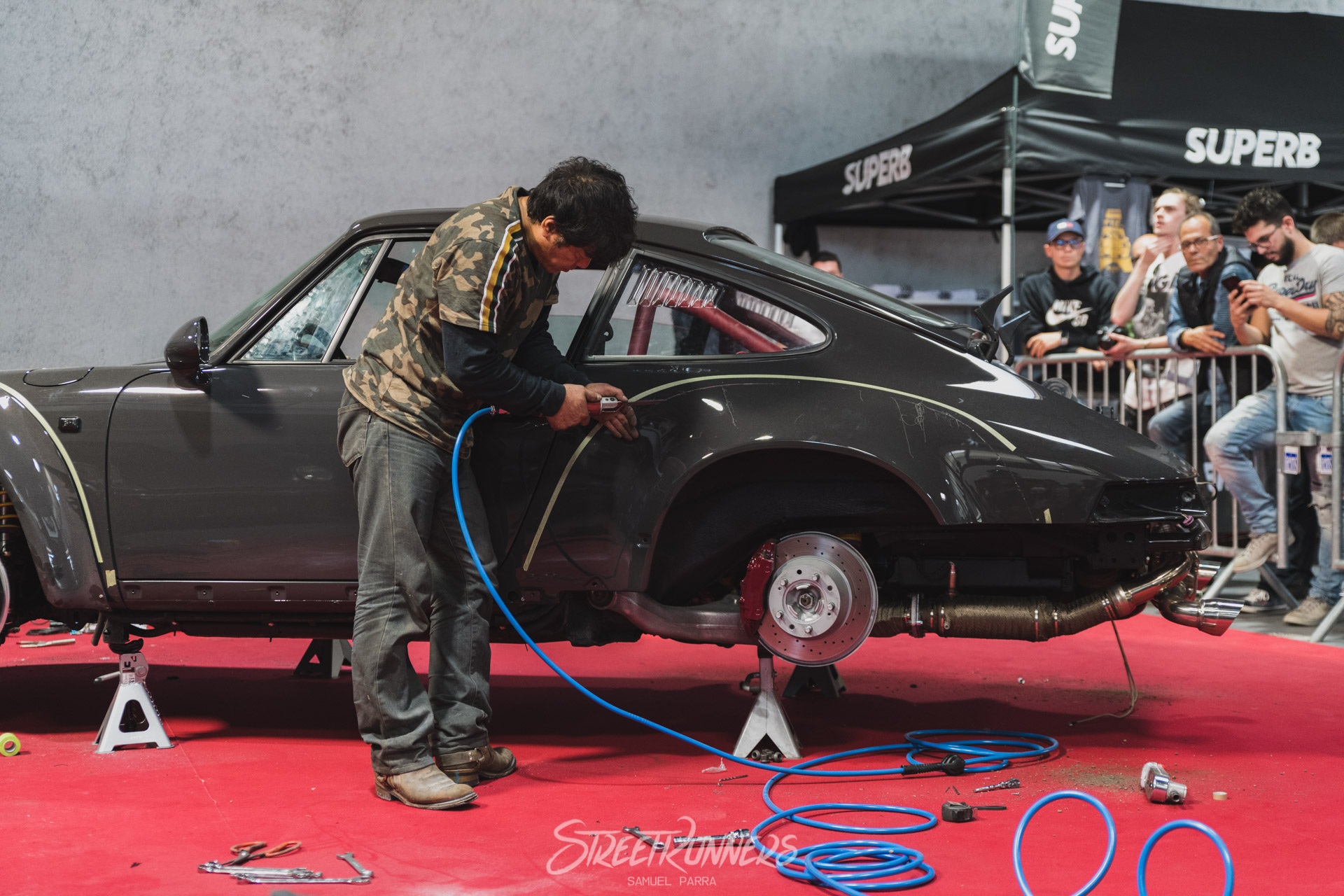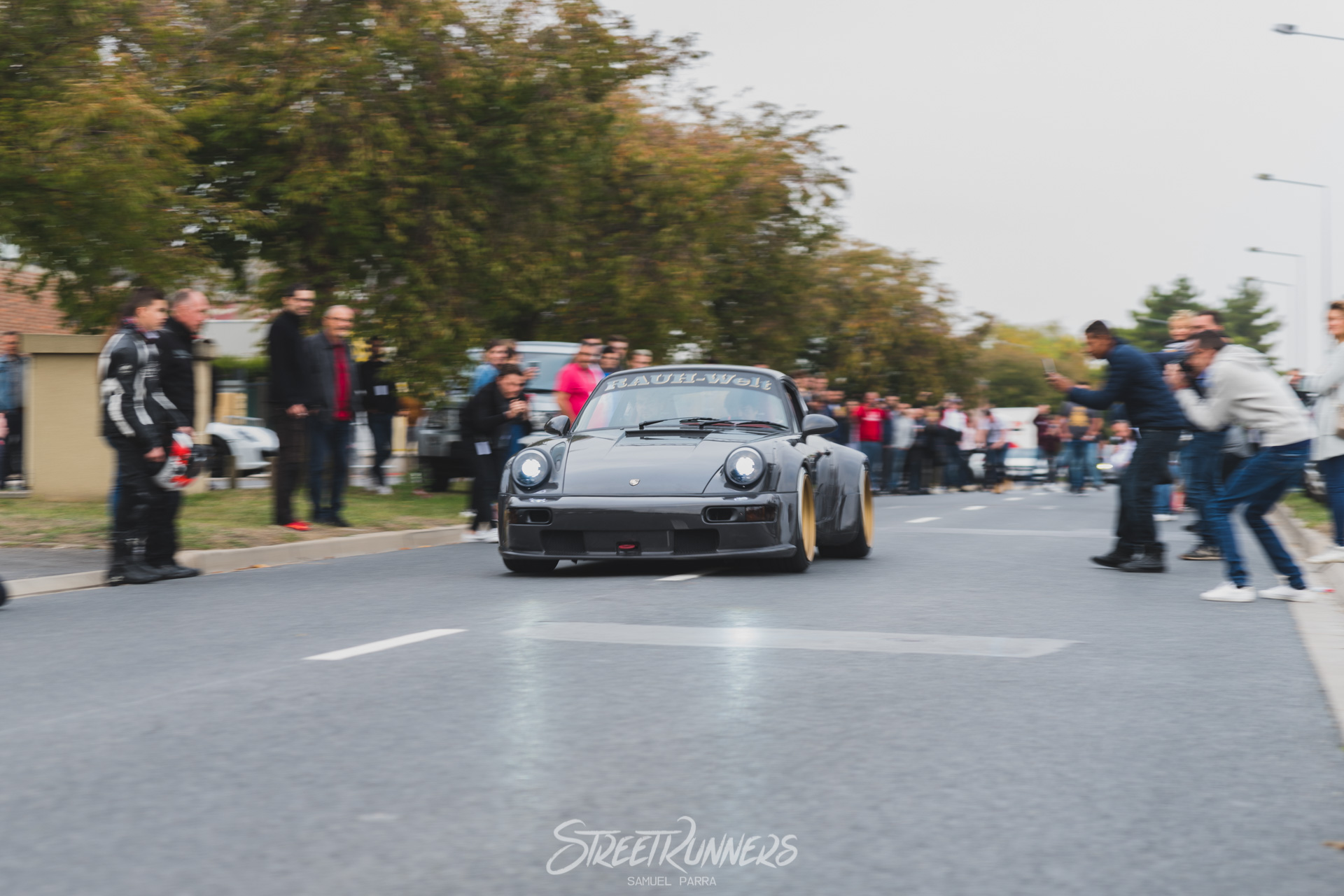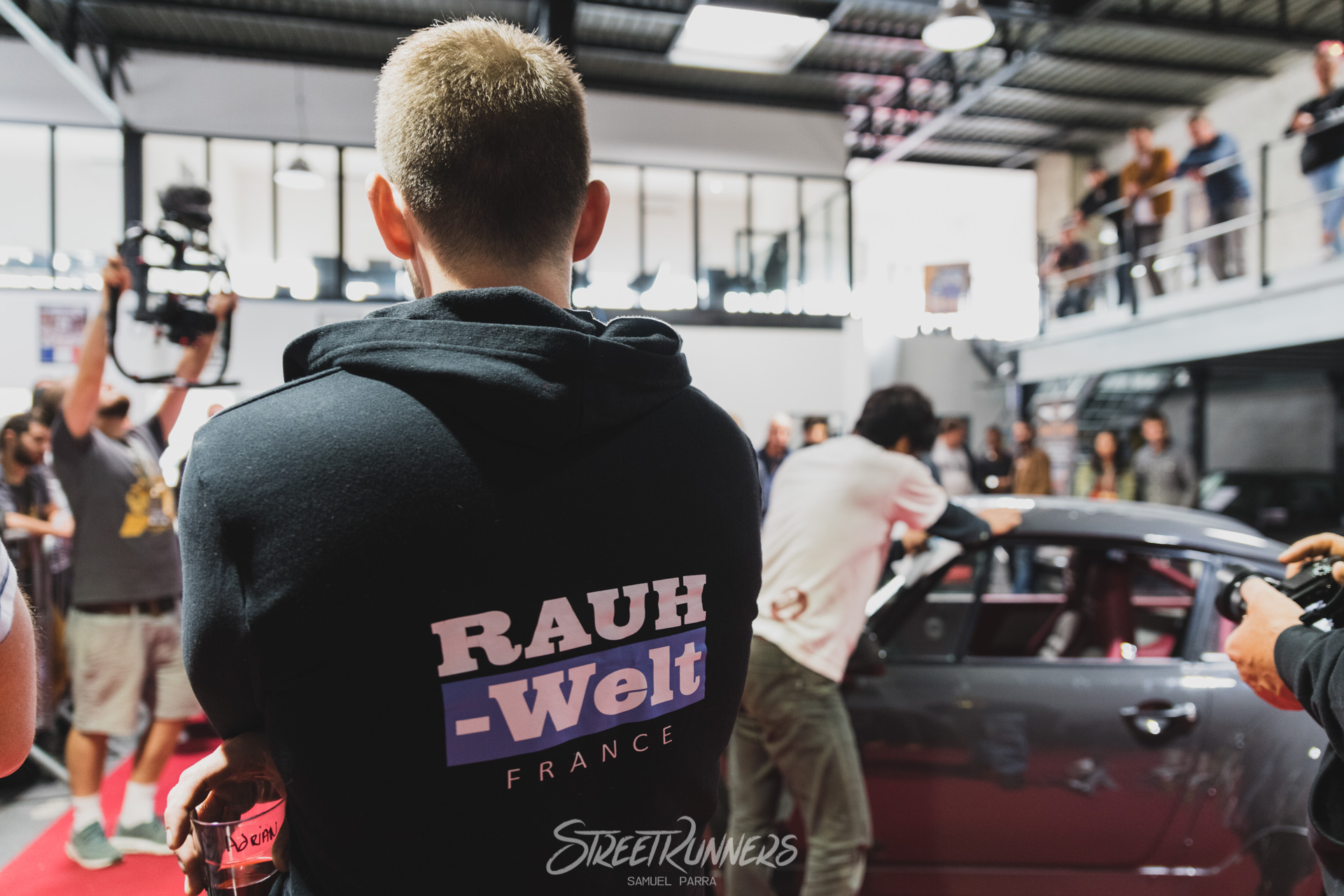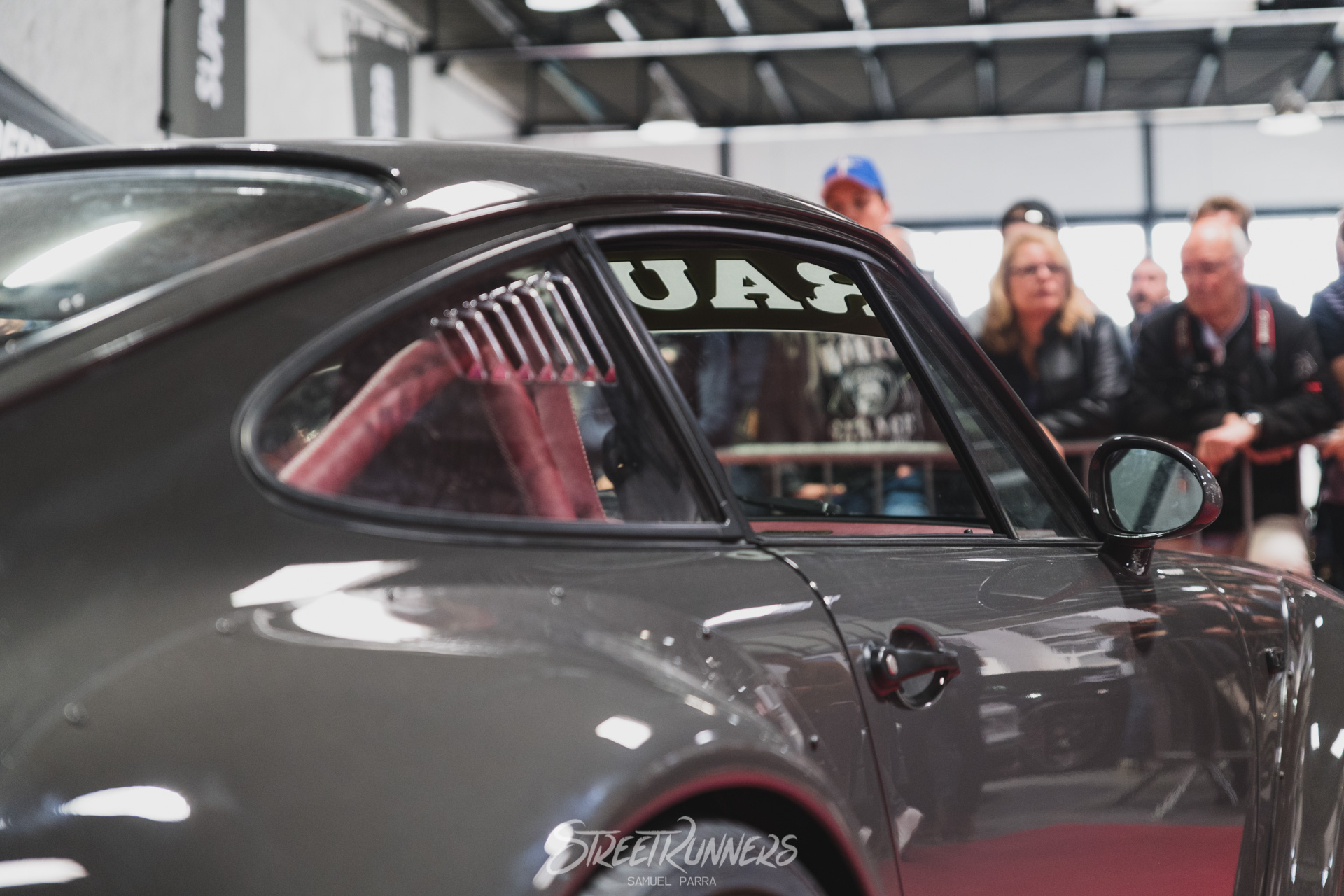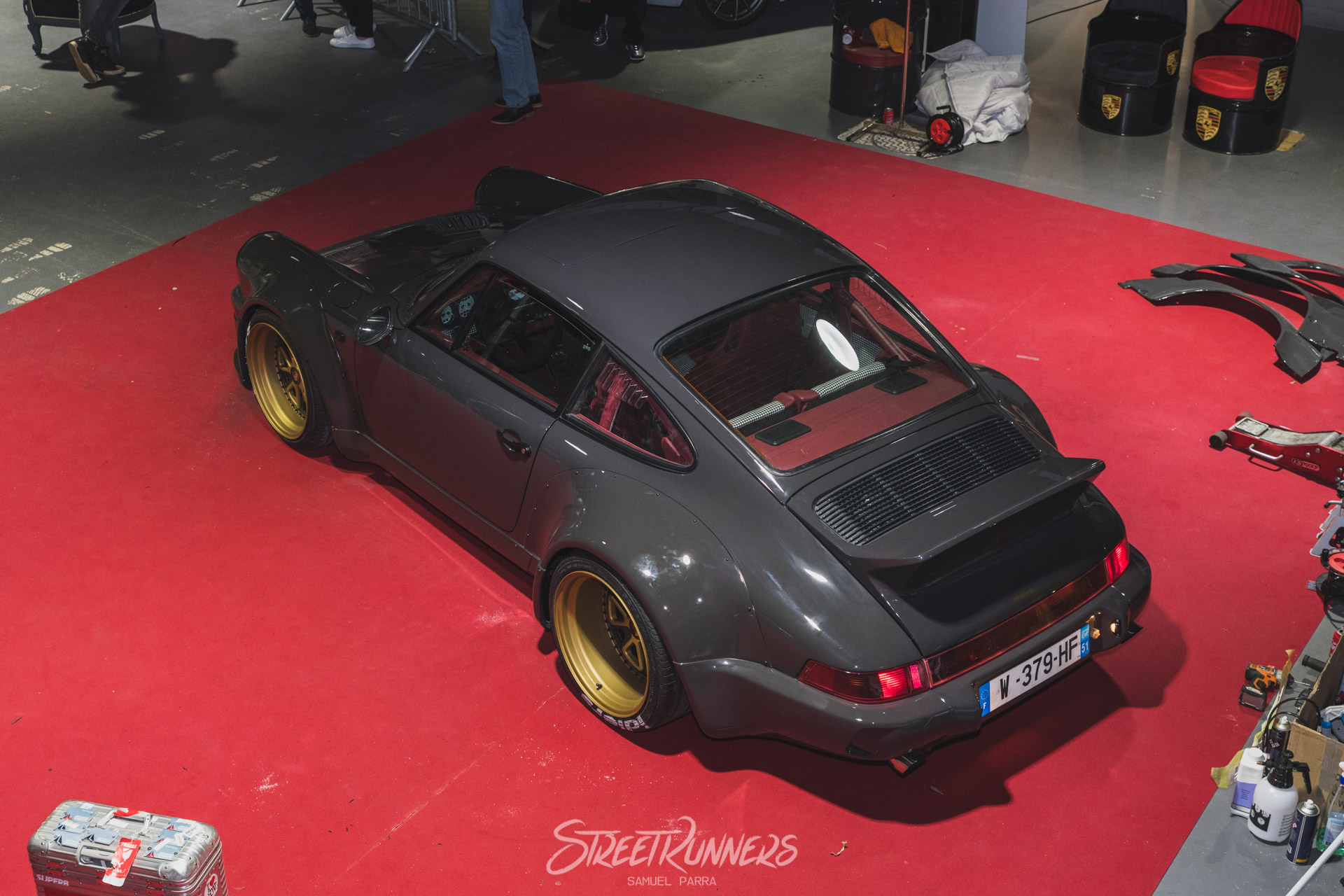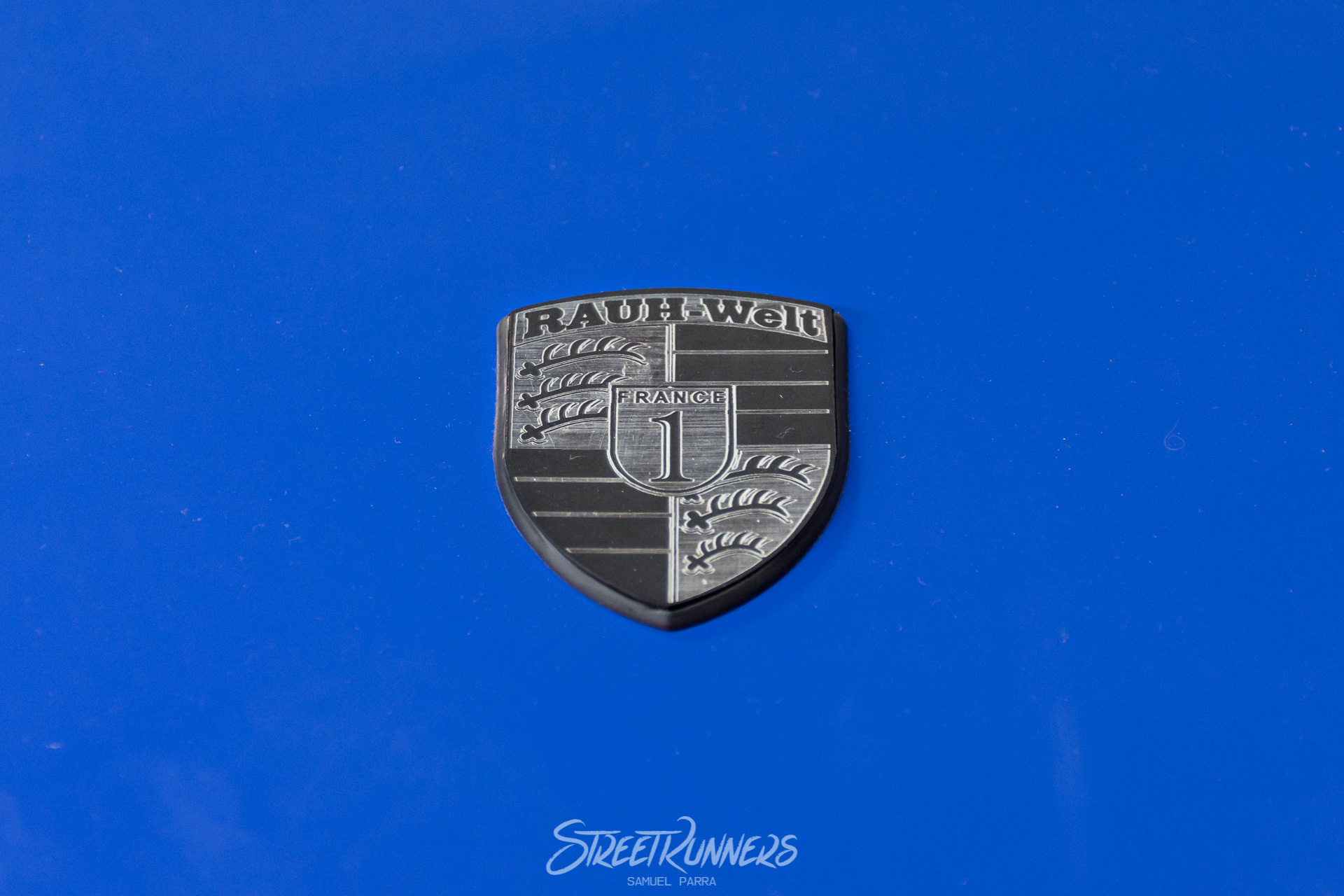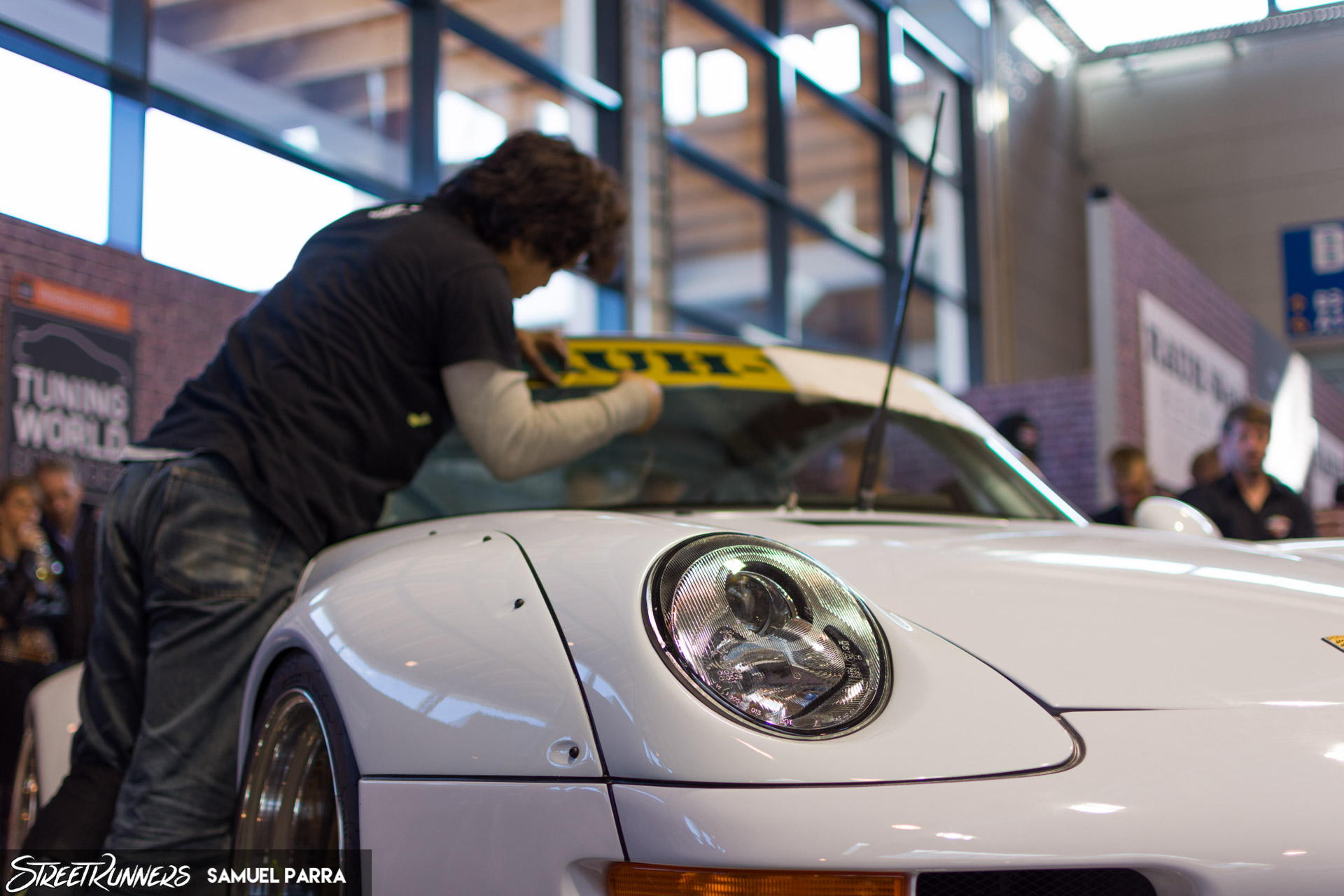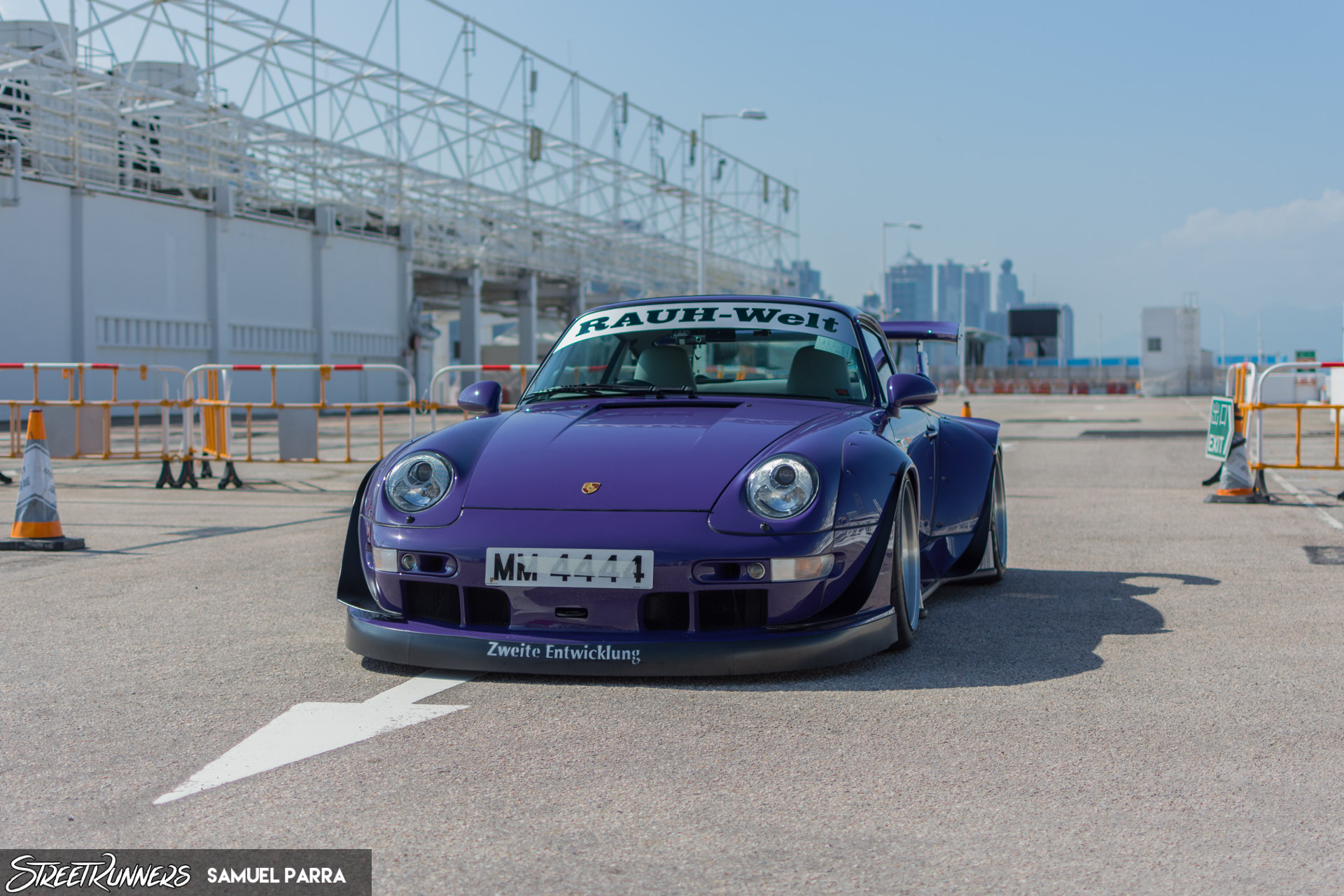RWB France #2: More. Better.
- Samuel Parra
6th and 7th of October had been marked in my calendar and in many other RWB enthusiasts’ ones for a long time: just about a year after Champagne was born, Nakai-san was coming back to Reims, France, to bring another one of his creations to life. He was also doing it in the same workshop and for the same owners as the last time: Mat, Adrian and Hervé. Not happy with having only one, the French trio wanted to enjoy another RWB with a whole different vibe than the first one before they started accepting client orders and we didn’t want to miss the opportunity of enjoying this event with them.
The venue was the same, but as we walked through the front door we realized that everything was going to be so
different from last years’: the organizers had taken good note of what could be improved and had performed the
necessary changes in order to make everyone who came to the car dealership that weekend as comfortable as possible.
And it worked. This second French RWB build was both more of an event and a better event. During the weekend we could
witness how this build has been one of the best European ones in which no detail has been spared neither in the car
nor in everything else.
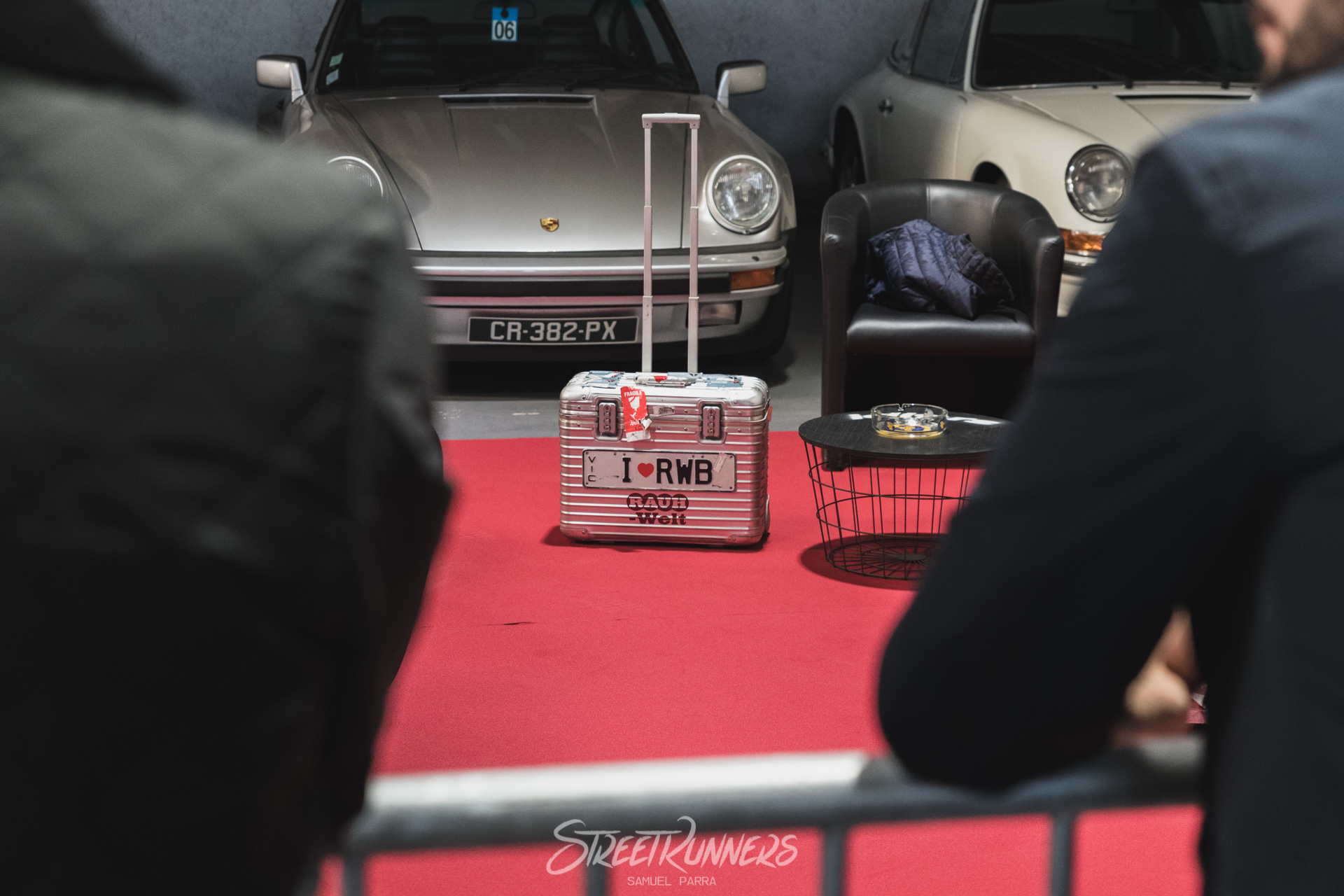 Watching Nakai at work for two whole days is fascinating, but it can also be tiresome. That’s why on this occasion
the showroom was emptied so more people could fit comfortably. There was also some space for vendors:
SUPERB crew, in charge of filming the event, set up a tent where you could
buy their merchandising, including an exclusive T-shirt of the event. Close to it, an artist was doing a graffiti of an
RWB at the same time Nakai built the real one. There were also some diecast car models on sale and even the shop that
retrimmed the 911’s interior was doing custom RWB embroidery on any piece of clothing that the attendees brought. It
proved to be a success: they worked non-stop during the whole two days.
Watching Nakai at work for two whole days is fascinating, but it can also be tiresome. That’s why on this occasion
the showroom was emptied so more people could fit comfortably. There was also some space for vendors:
SUPERB crew, in charge of filming the event, set up a tent where you could
buy their merchandising, including an exclusive T-shirt of the event. Close to it, an artist was doing a graffiti of an
RWB at the same time Nakai built the real one. There were also some diecast car models on sale and even the shop that
retrimmed the 911’s interior was doing custom RWB embroidery on any piece of clothing that the attendees brought. It
proved to be a success: they worked non-stop during the whole two days.
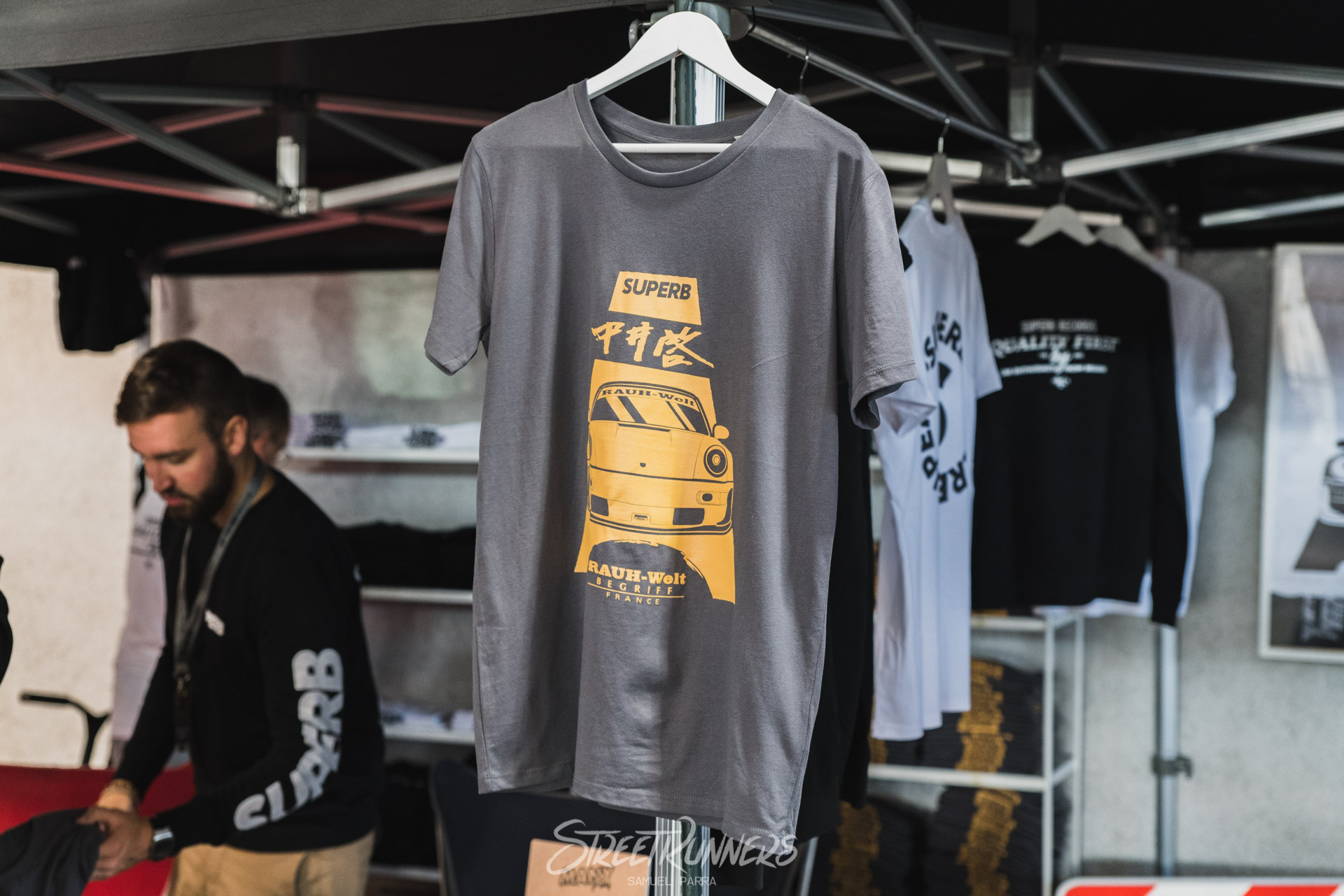
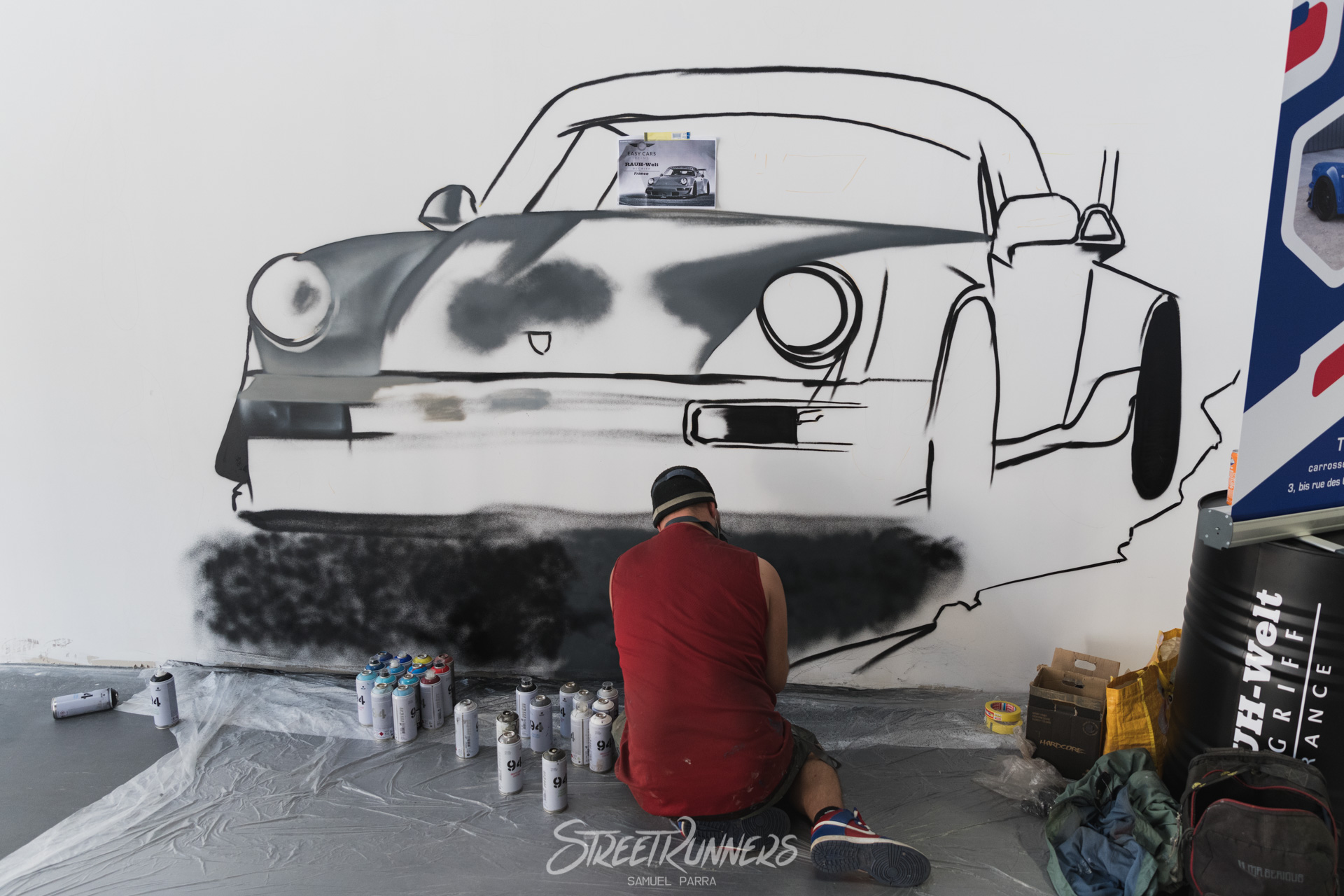 It was a nice setup, but obviously the main attraction was that dark grey 964. Its fenders were still untouched but
you could already see the style that they were aiming for this second build.
It was a nice setup, but obviously the main attraction was that dark grey 964. Its fenders were still untouched but
you could already see the style that they were aiming for this second build.
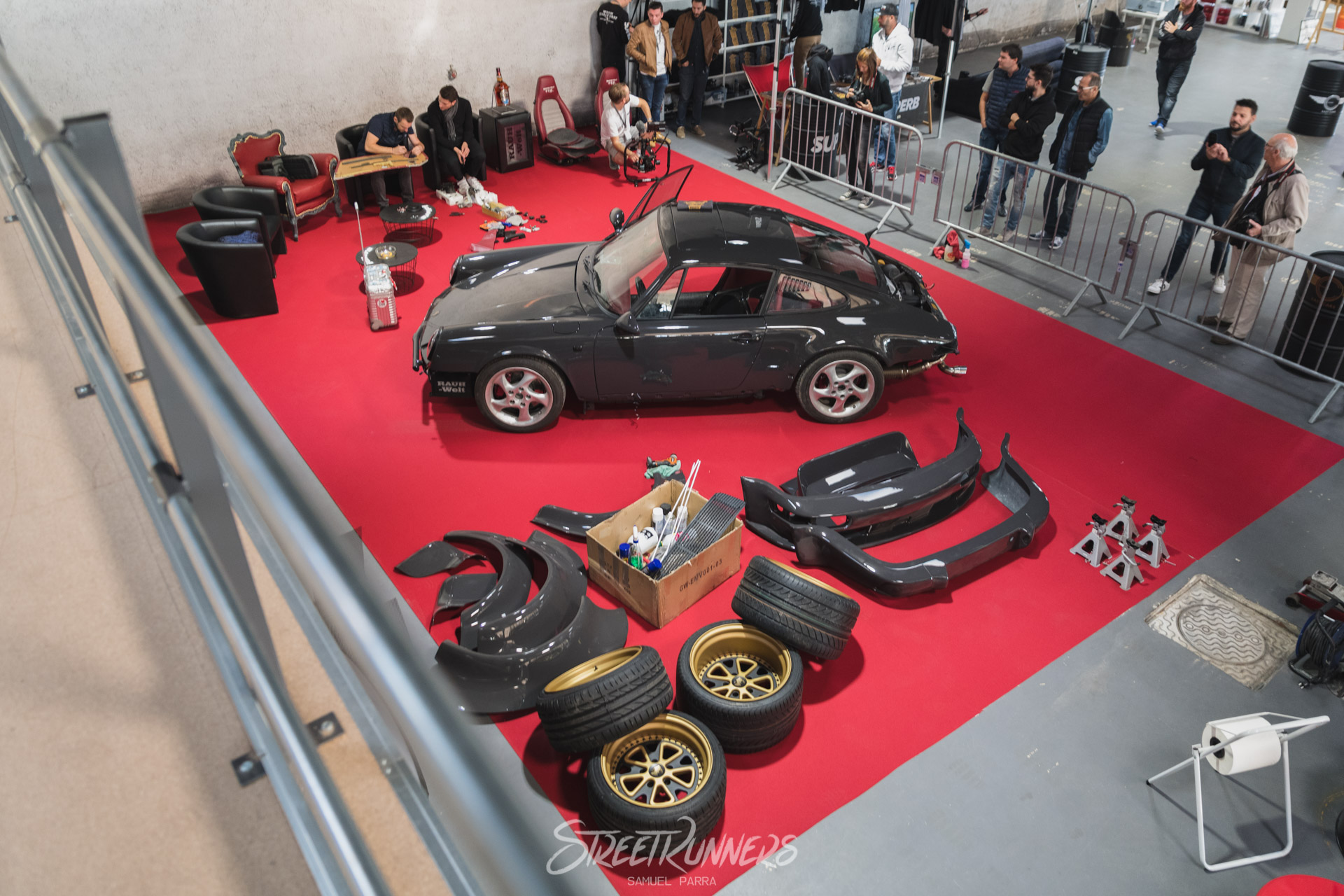 In contrast to Champagne’s interior, this one didn’t look like a stripped, lightweight race car with bucket seats.
It had a Singer vibe to it, trying to preserve the original Porsche design lines but improving every possible aspect:
there was no trace of the factory carpet in the back or on the transmission tunnel: everything had been covered with a
single fiberglass piece, which gave it a renewed look. Seats were the original ones but retrimmed in bordeaux color,
and the rollcage was wrapped with color-matched leather too (one of the finest details of the whole interior, if you
ask me). Gauges were also handmade and a Bluetooth sound system had been installed in order to be as less noticeable as
possible.
In contrast to Champagne’s interior, this one didn’t look like a stripped, lightweight race car with bucket seats.
It had a Singer vibe to it, trying to preserve the original Porsche design lines but improving every possible aspect:
there was no trace of the factory carpet in the back or on the transmission tunnel: everything had been covered with a
single fiberglass piece, which gave it a renewed look. Seats were the original ones but retrimmed in bordeaux color,
and the rollcage was wrapped with color-matched leather too (one of the finest details of the whole interior, if you
ask me). Gauges were also handmade and a Bluetooth sound system had been installed in order to be as less noticeable as
possible.
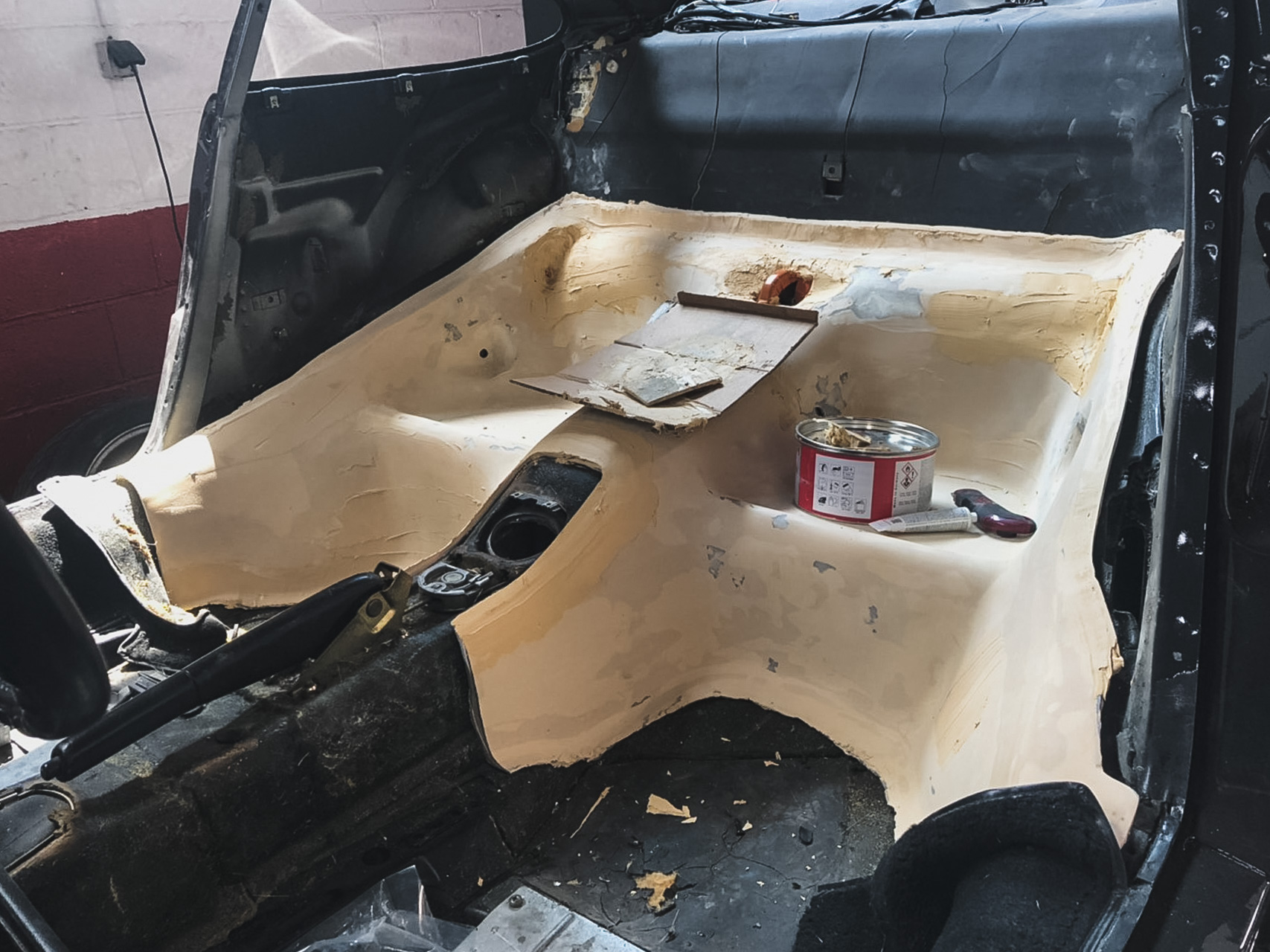
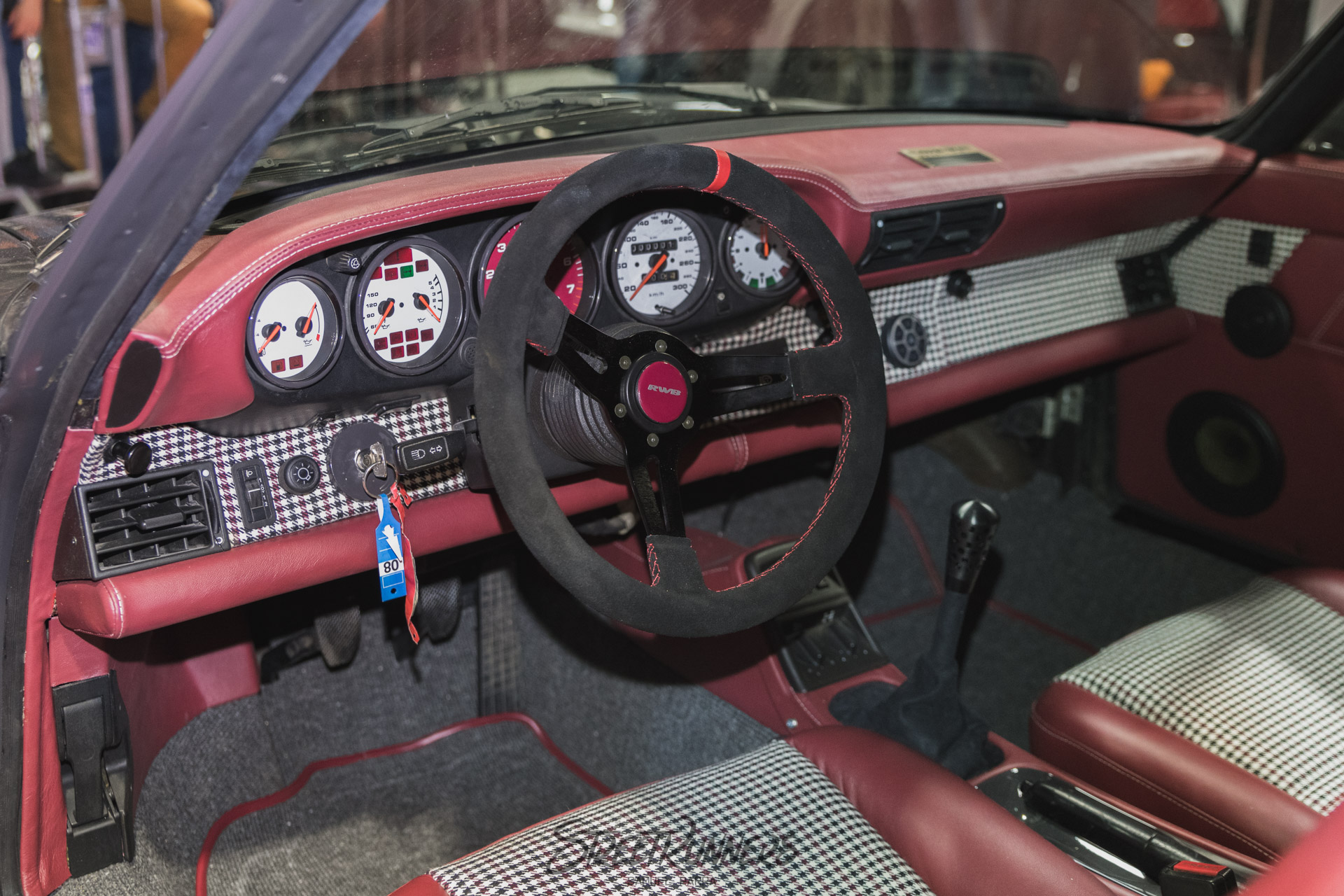
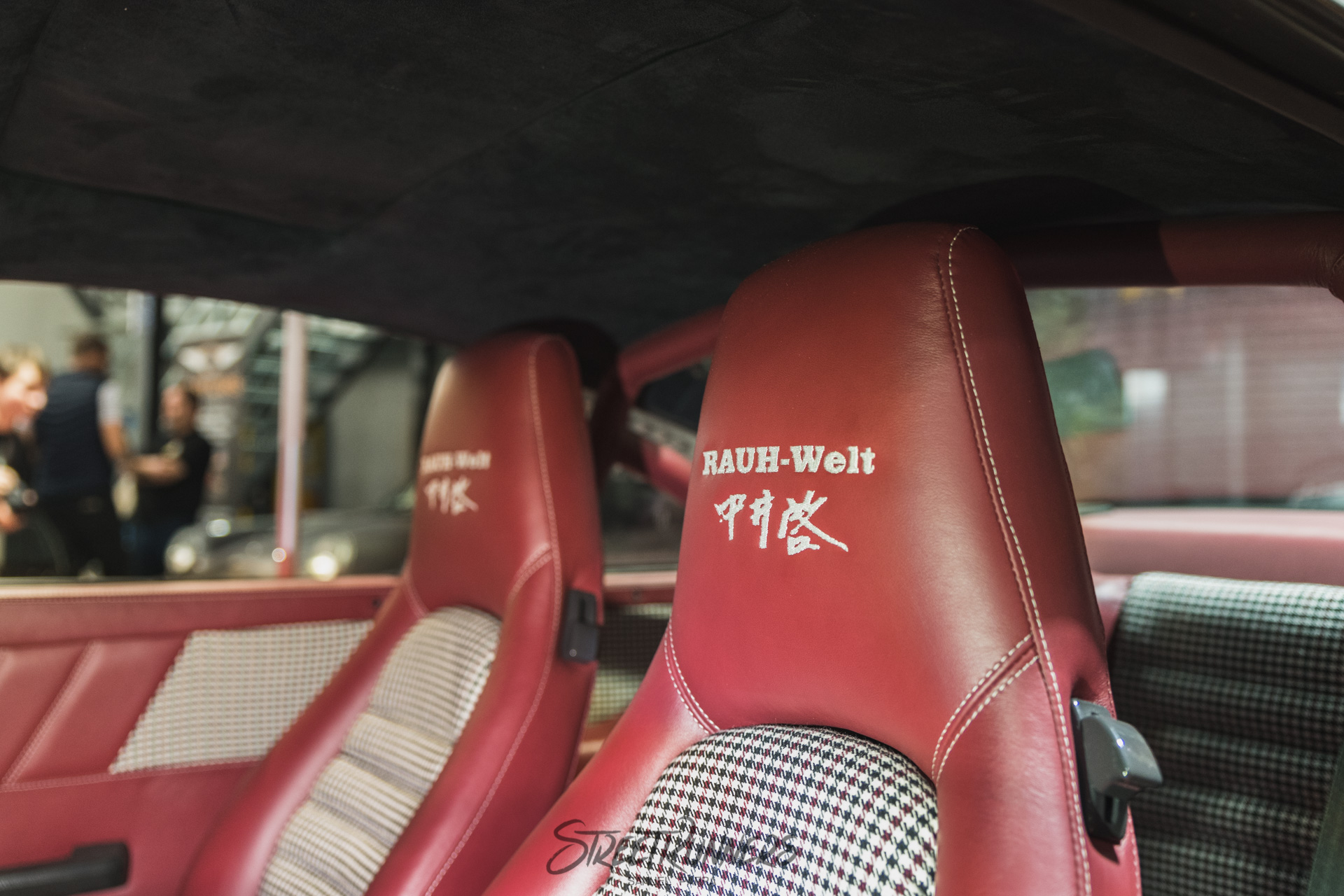 However, the reason which I was really longing for this car to hit the streets was another one: its engine. One of the
most criticized aspects of RWB is that they’re sometimes just a façade, beautiful shells whose performance doesn’t
match their looks. Although it’s true that on a lot of them the engine remains stock, one thing should be made clear:
Nakai-san used to work as a Porsche mechanic, but he is nowadays a bodywork specialist who entrusts other Japanese
shops such as Promodet or Rauh Welt Republik with performance improvements on his personal cars. The same applies to
his customers, who decide on their own what type of modifications, if any, will be done to their engines.
However, the reason which I was really longing for this car to hit the streets was another one: its engine. One of the
most criticized aspects of RWB is that they’re sometimes just a façade, beautiful shells whose performance doesn’t
match their looks. Although it’s true that on a lot of them the engine remains stock, one thing should be made clear:
Nakai-san used to work as a Porsche mechanic, but he is nowadays a bodywork specialist who entrusts other Japanese
shops such as Promodet or Rauh Welt Republik with performance improvements on his personal cars. The same applies to
his customers, who decide on their own what type of modifications, if any, will be done to their engines.
In this case, I knew that no one would be disappointed. I had been following the evolution of the flat six that would
go into the car on Adrian’s Instagram account and it looked like it was
going to be fast: everything had been thoroughly cleaned and the original pistons and rods had been replaced for
forged ones from Wössner and CP Carrillo, respectively. A 996 GT3 oil pump, race valve springs and a TPC Racing
supercharger completed the package, and although there are no official numbers yet, we could be looking at a 400+ hp
911.
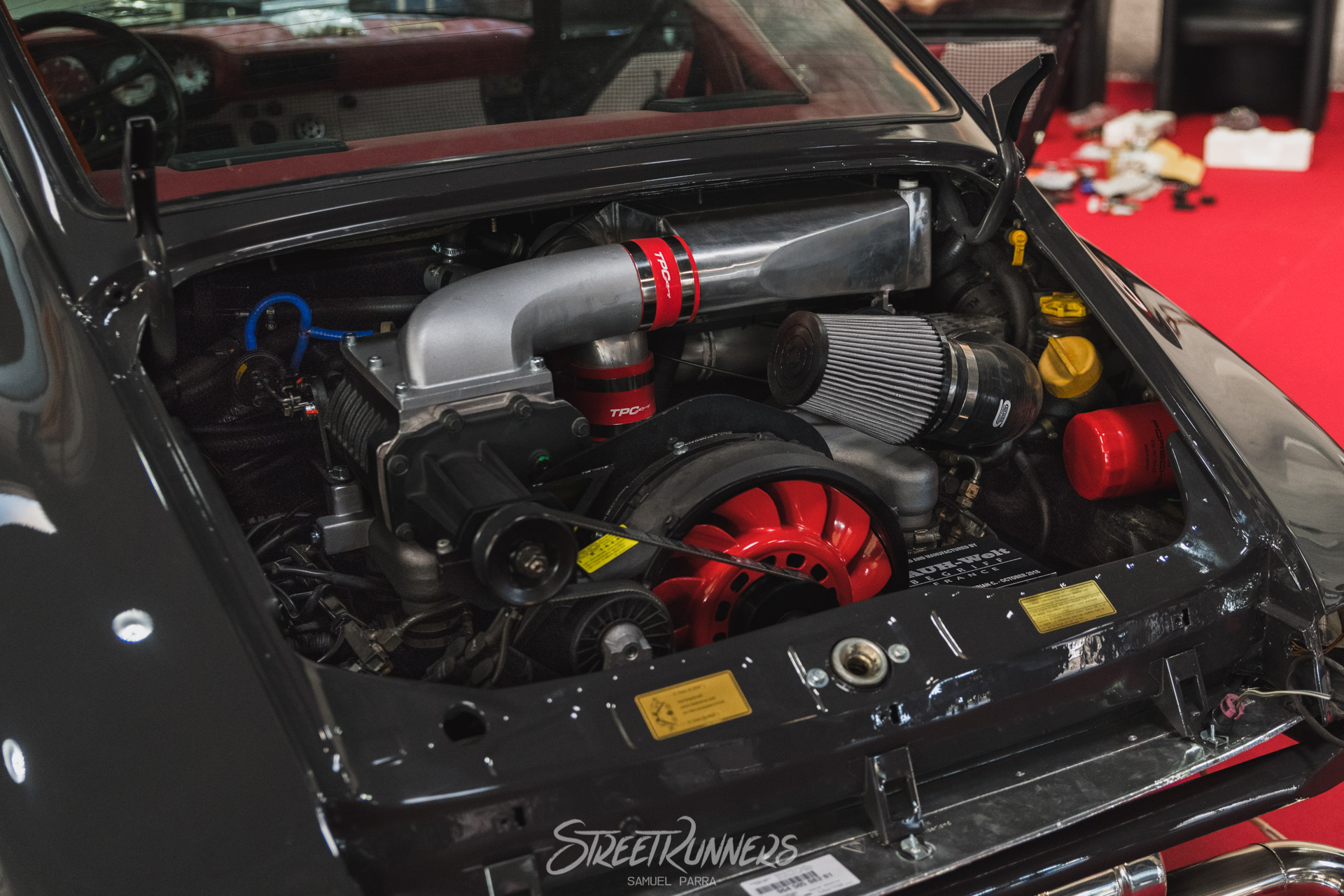
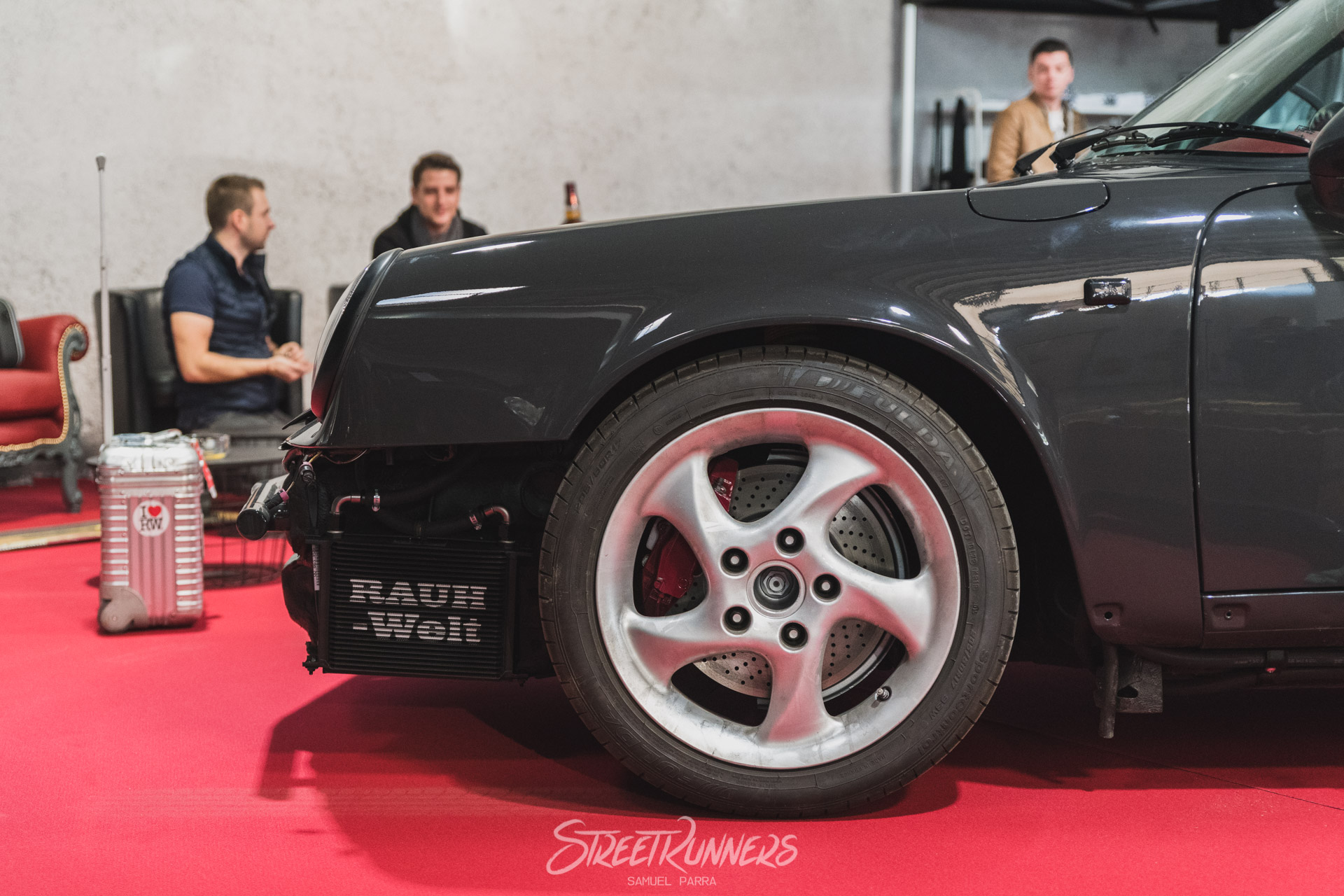 As usual, Nakai-san didn’t waste a second and started to work on the car right away on Saturday: he did some trimming
on the front bumper, glued the iconic black mesh on the air intakes and installed it provisionally to use it as a
reference for the overfenders position.
As usual, Nakai-san didn’t waste a second and started to work on the car right away on Saturday: he did some trimming
on the front bumper, glued the iconic black mesh on the air intakes and installed it provisionally to use it as a
reference for the overfenders position.
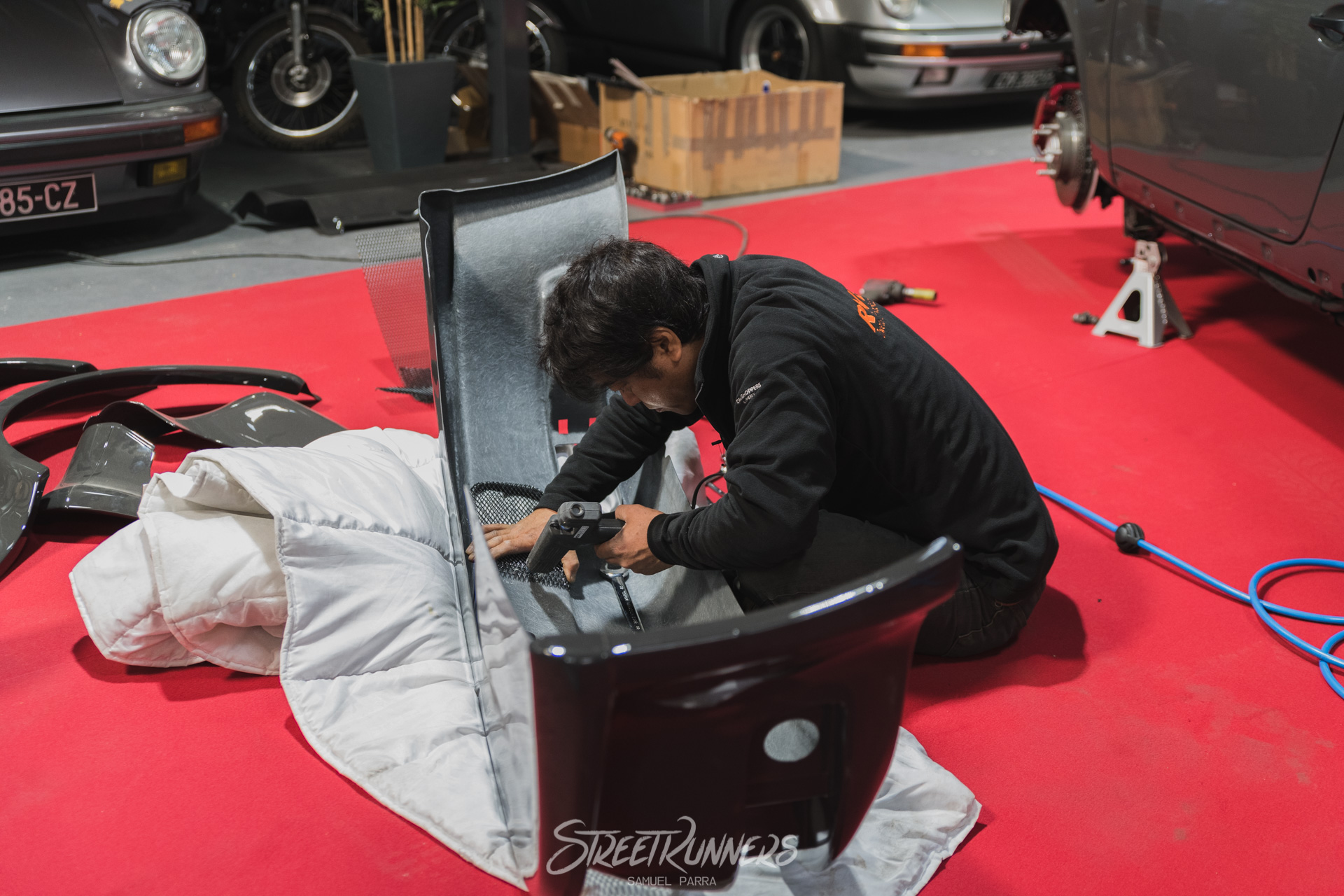 But before I go on with the story, I’d like to show you one of the details I liked most about the car, and my main
motivation for the title I came up with for this feature: a metal bar.
But before I go on with the story, I’d like to show you one of the details I liked most about the car, and my main
motivation for the title I came up with for this feature: a metal bar.
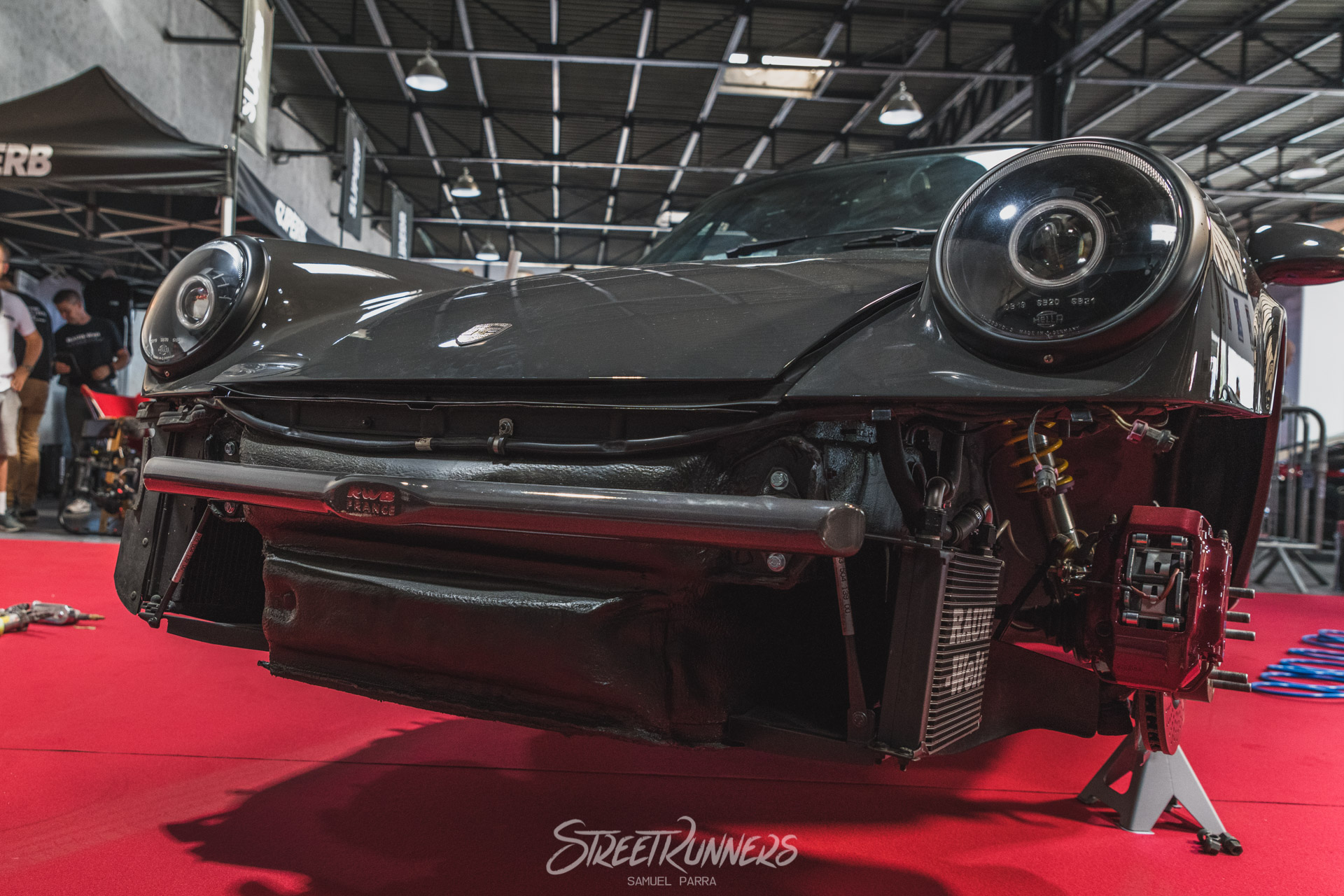 It was really simple, but also something that made me realize that this car has been built with as much care as
possible. Why?
It was really simple, but also something that made me realize that this car has been built with as much care as
possible. Why?
On RWBs, the design of both the front and the back bumpers makes them incompatible with the original bumper
reinforcement (it looks like this), so they’re generally removed. This makes the car
very fragile in the case of an impact as there isn’t anything behind the bumpers that protects the chassis. In order to
keep that extra protection, a metal bar, smaller and thinner than the original one, was installed in the car. As I was
saying, this was just a small detail that probably went unnoticed by most people. What’s more, that bar won’t be
visible at all with the bumper on, but still, details like this made me appreciate this car even more.
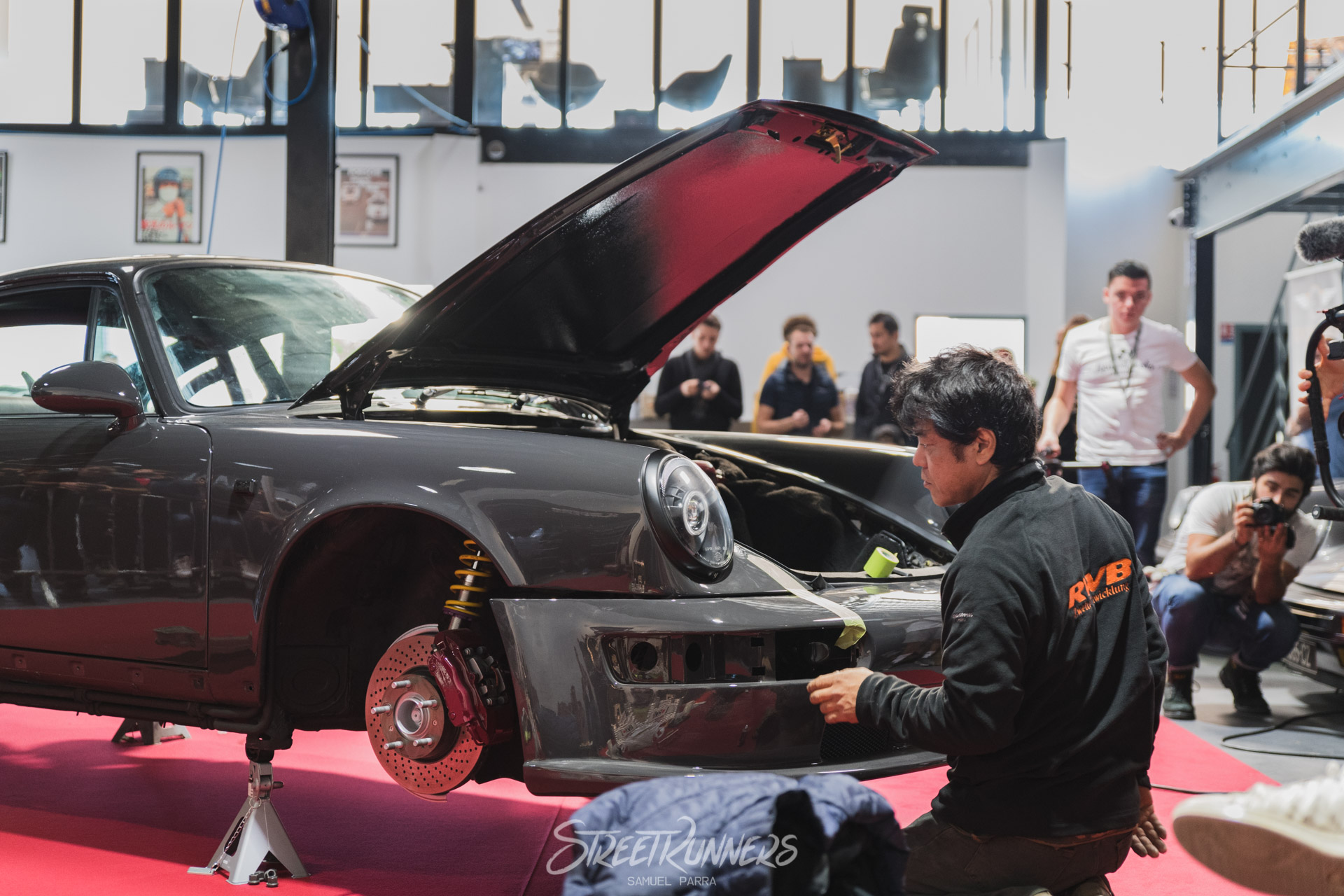 During the first day, Nakai-san seems to fly around the car. No joke, if you blink you’ll miss it! Since he reduced the
time he needs to finish an RWB from 3 days to 2, on the first one he installs all the body panels and spends the second
one reinforcing them and adjusting height and camber, so at the end of day 1 the car looks quite similar to its finished
form.
During the first day, Nakai-san seems to fly around the car. No joke, if you blink you’ll miss it! Since he reduced the
time he needs to finish an RWB from 3 days to 2, on the first one he installs all the body panels and spends the second
one reinforcing them and adjusting height and camber, so at the end of day 1 the car looks quite similar to its finished
form.
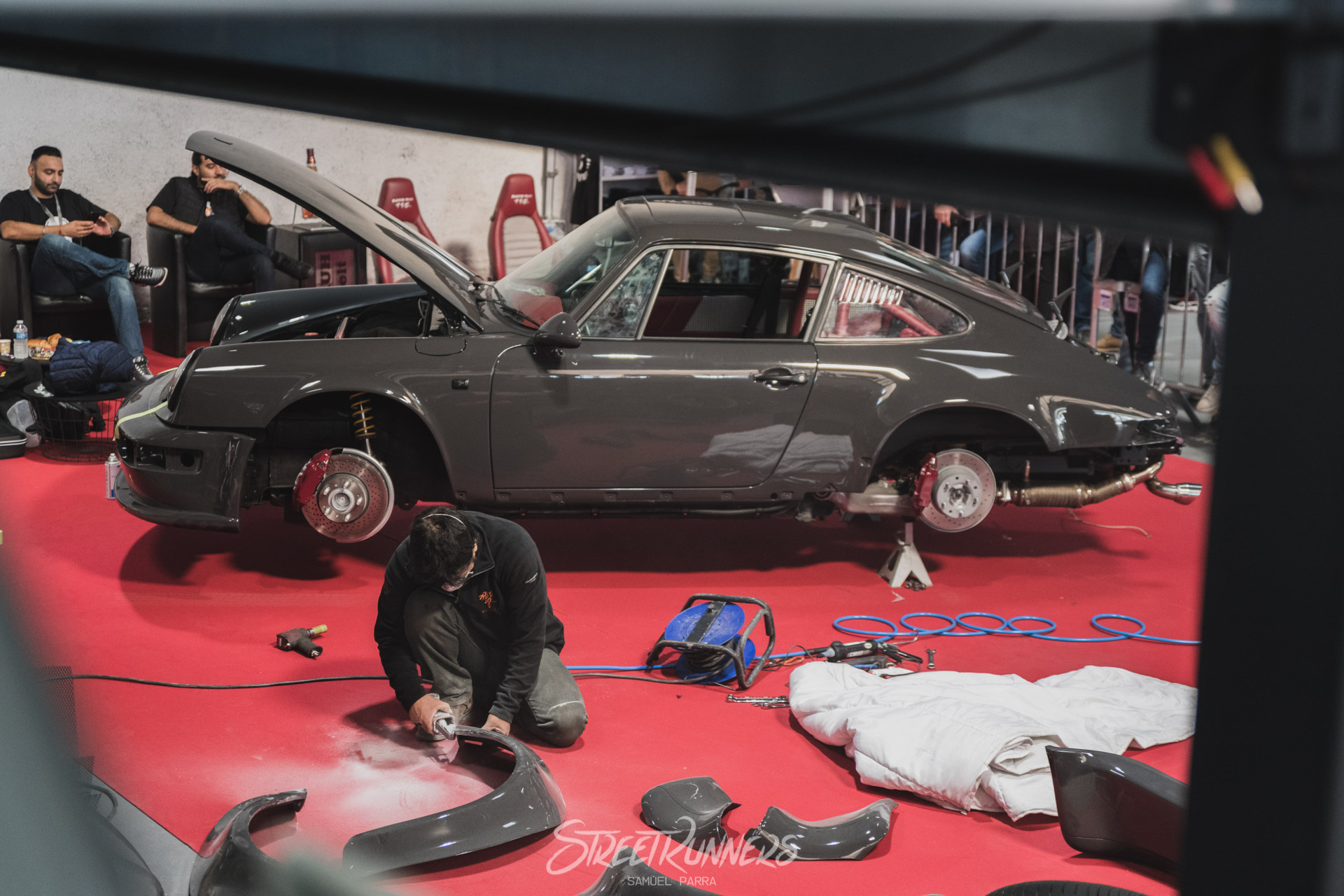
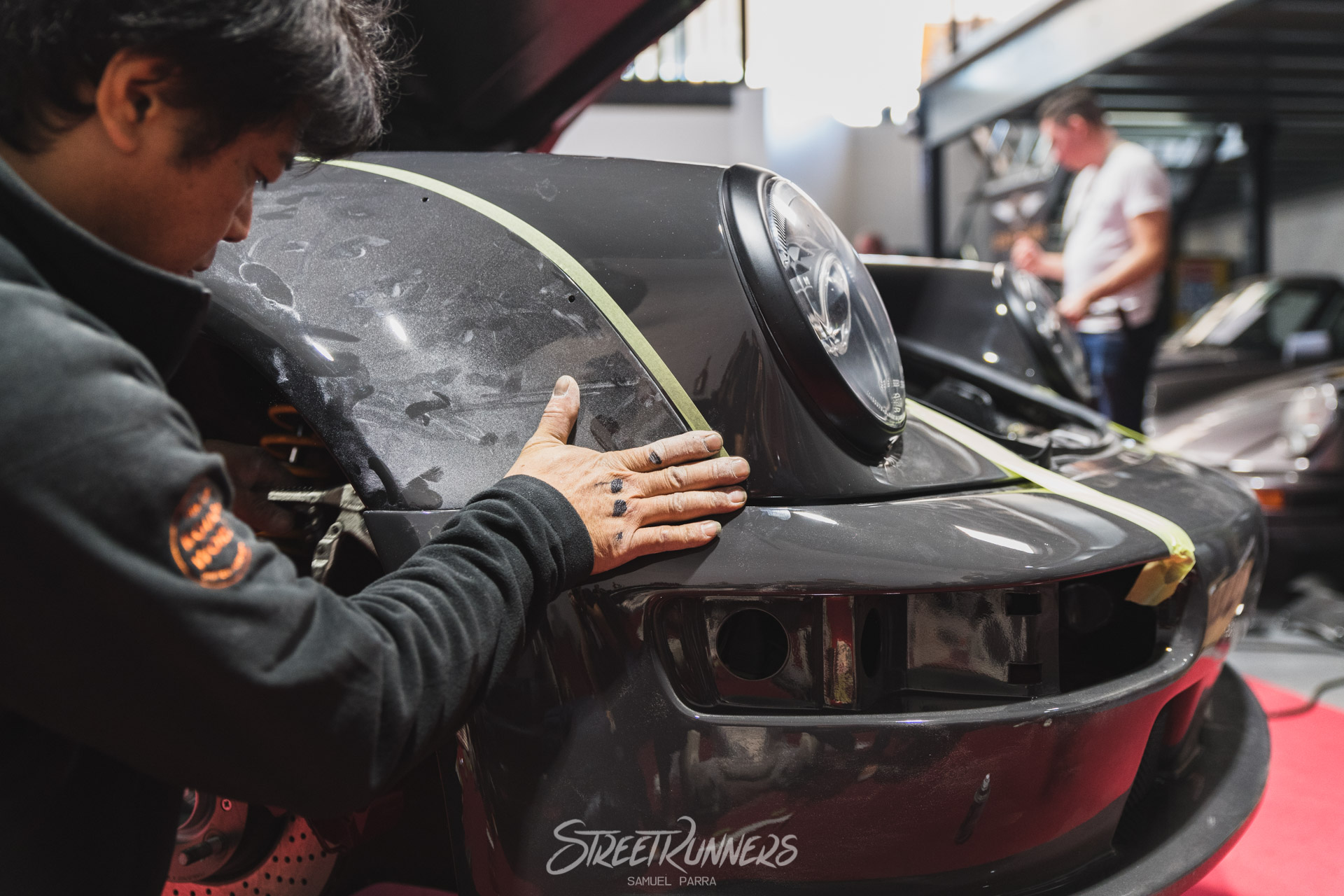
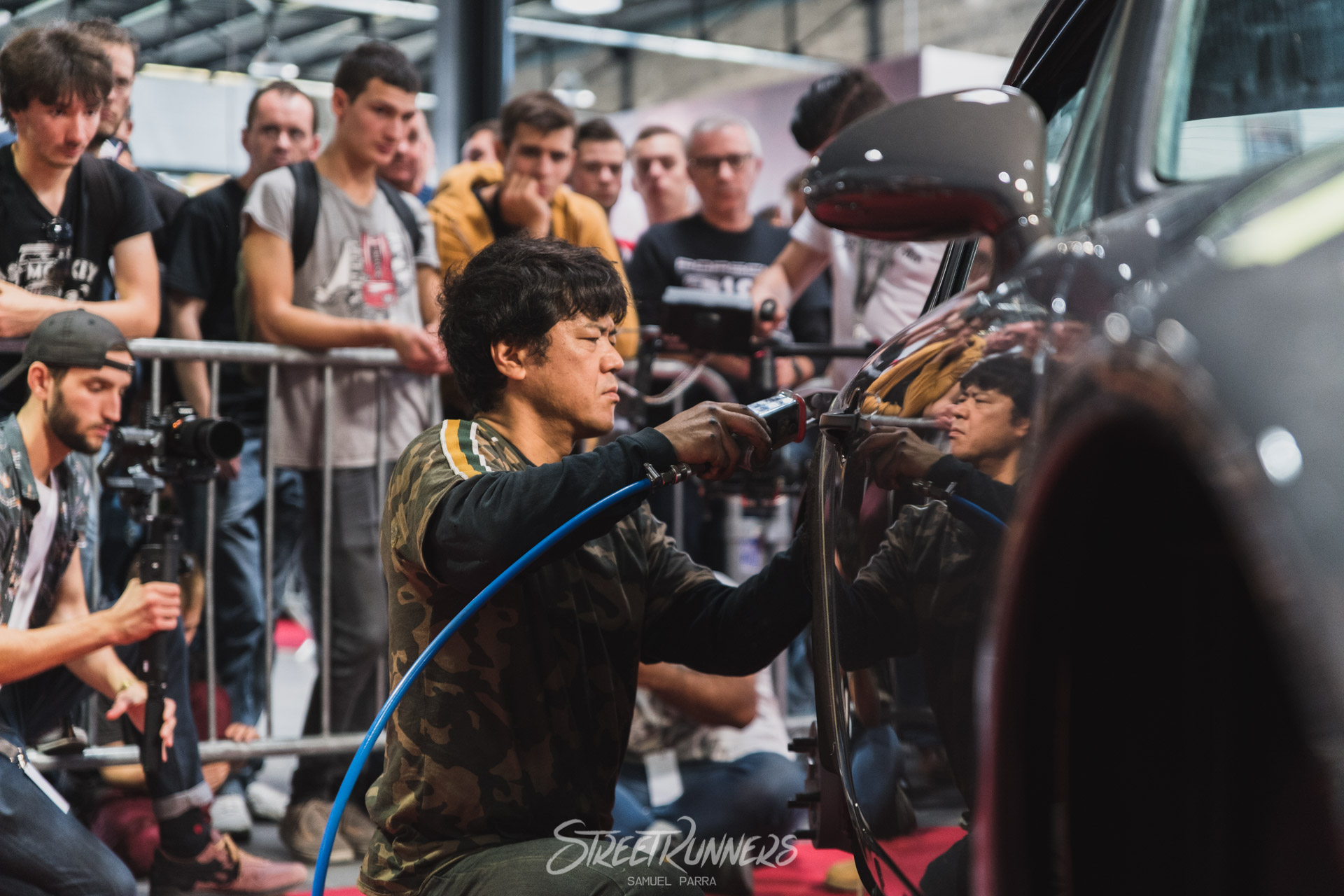
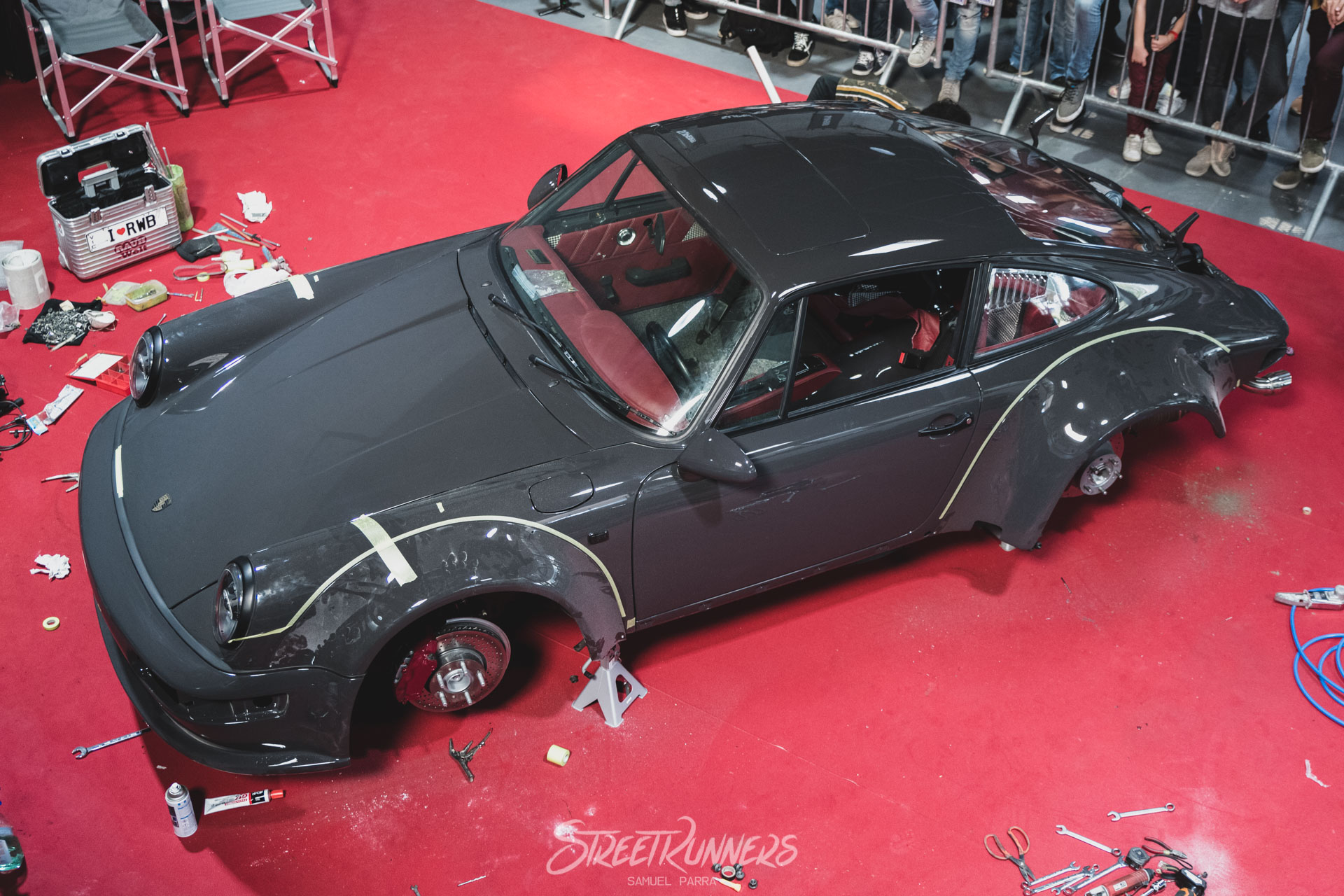 Nakai-san called it a day around 8 PM, so after a family dinner, we went back to the hotel to have some rest.
Nakai-san called it a day around 8 PM, so after a family dinner, we went back to the hotel to have some rest.
As I was saying before, the pace of the second day is slower than the first one, although that doesn’t mean there’s no work to be done. Nakai spends the whole day doing small things that make the car as a whole look perfect when it’s done.
After bolting the tow hook he installed the front banner, also part of his signature, and spent quite a lot of time
adjusting the camber of the Outlaw 001 wheels, a collaboration between Magnus Walker and Fifteen52 that the owners
chose for the car.
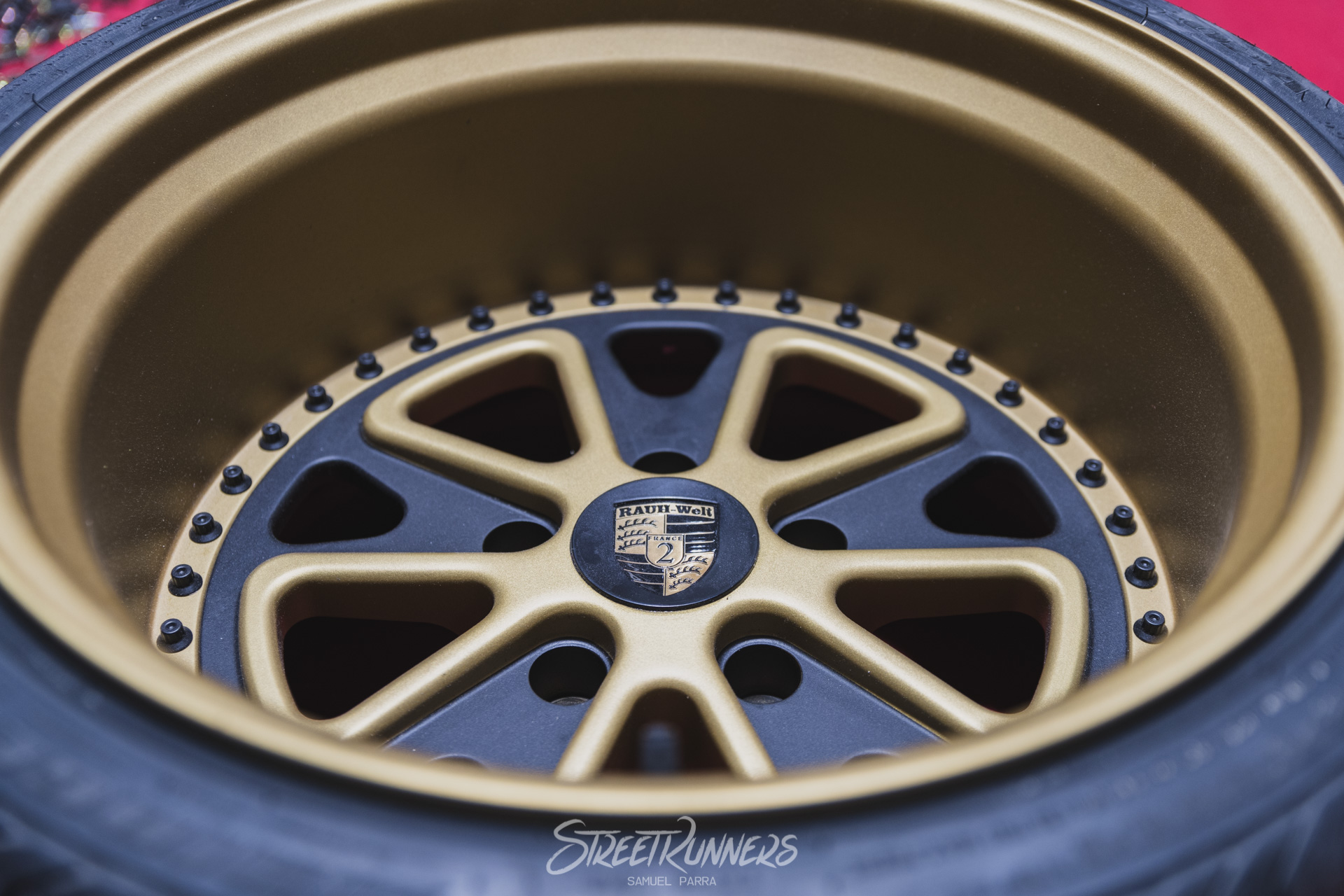
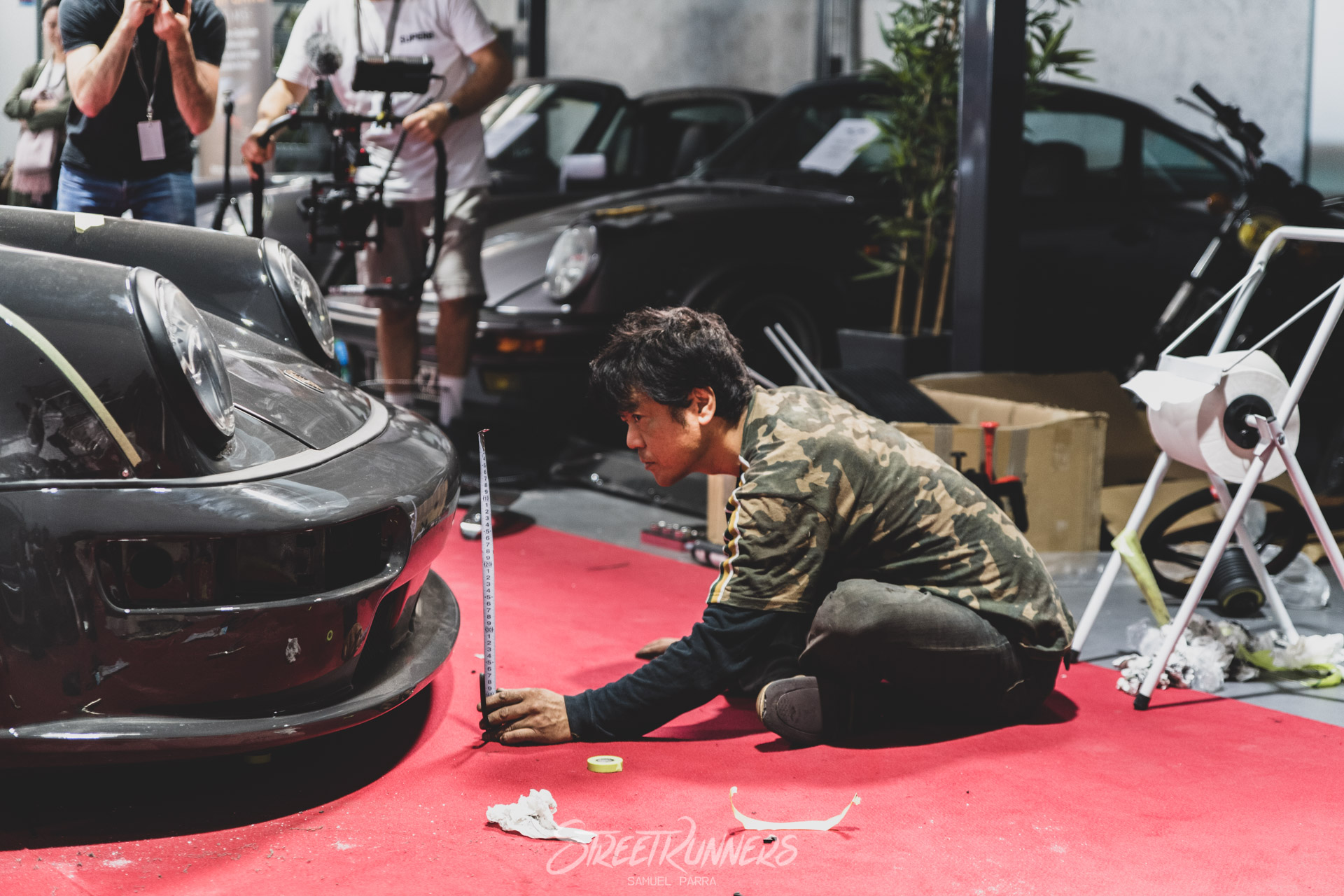 Once he was satisfied with how the car sat, he finished it off installing the last piece of his kit, a ducktail. More
and more RWB owners are choosing this option instead of the classic GT wing lately, and in this case it matched the
vintage theme of the car perfectly. The vinyl that covers most of the engine cover in the back wasn’t installed either,
as the french trio found more fitting to put a small RWB logo on the back, same color as the wheels.
Once he was satisfied with how the car sat, he finished it off installing the last piece of his kit, a ducktail. More
and more RWB owners are choosing this option instead of the classic GT wing lately, and in this case it matched the
vintage theme of the car perfectly. The vinyl that covers most of the engine cover in the back wasn’t installed either,
as the french trio found more fitting to put a small RWB logo on the back, same color as the wheels.
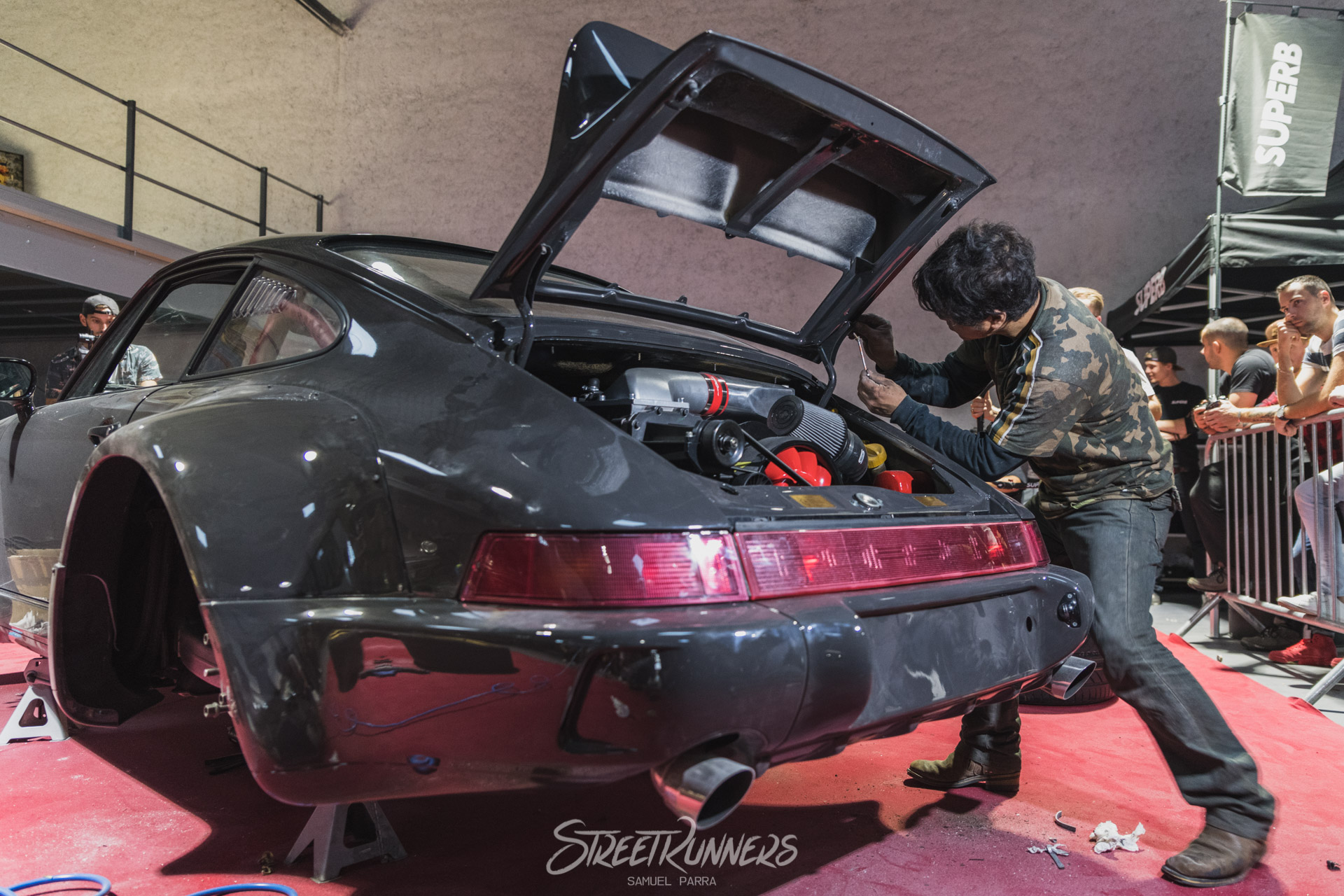 With the car almost ready, the only remaining thing was to spray the Idlers logo on the 4 tyres and, in the middle of
a resounding applause, hand the car over to his owners: Mat, Adrian, Hervé and their new workshop partner, Cédric. Not
as a Porsche anymore, but as an RWB.
With the car almost ready, the only remaining thing was to spray the Idlers logo on the 4 tyres and, in the middle of
a resounding applause, hand the car over to his owners: Mat, Adrian, Hervé and their new workshop partner, Cédric. Not
as a Porsche anymore, but as an RWB.
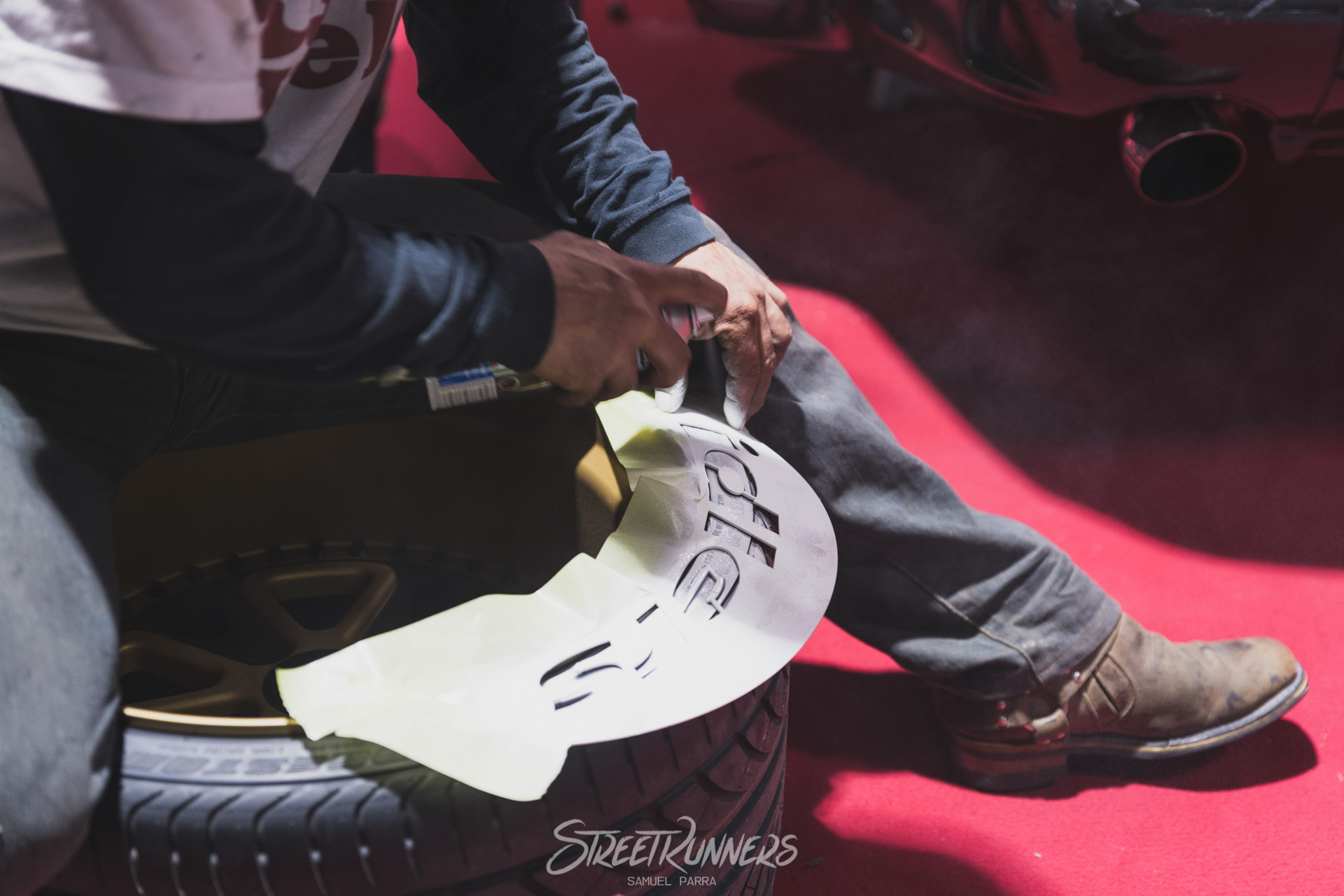
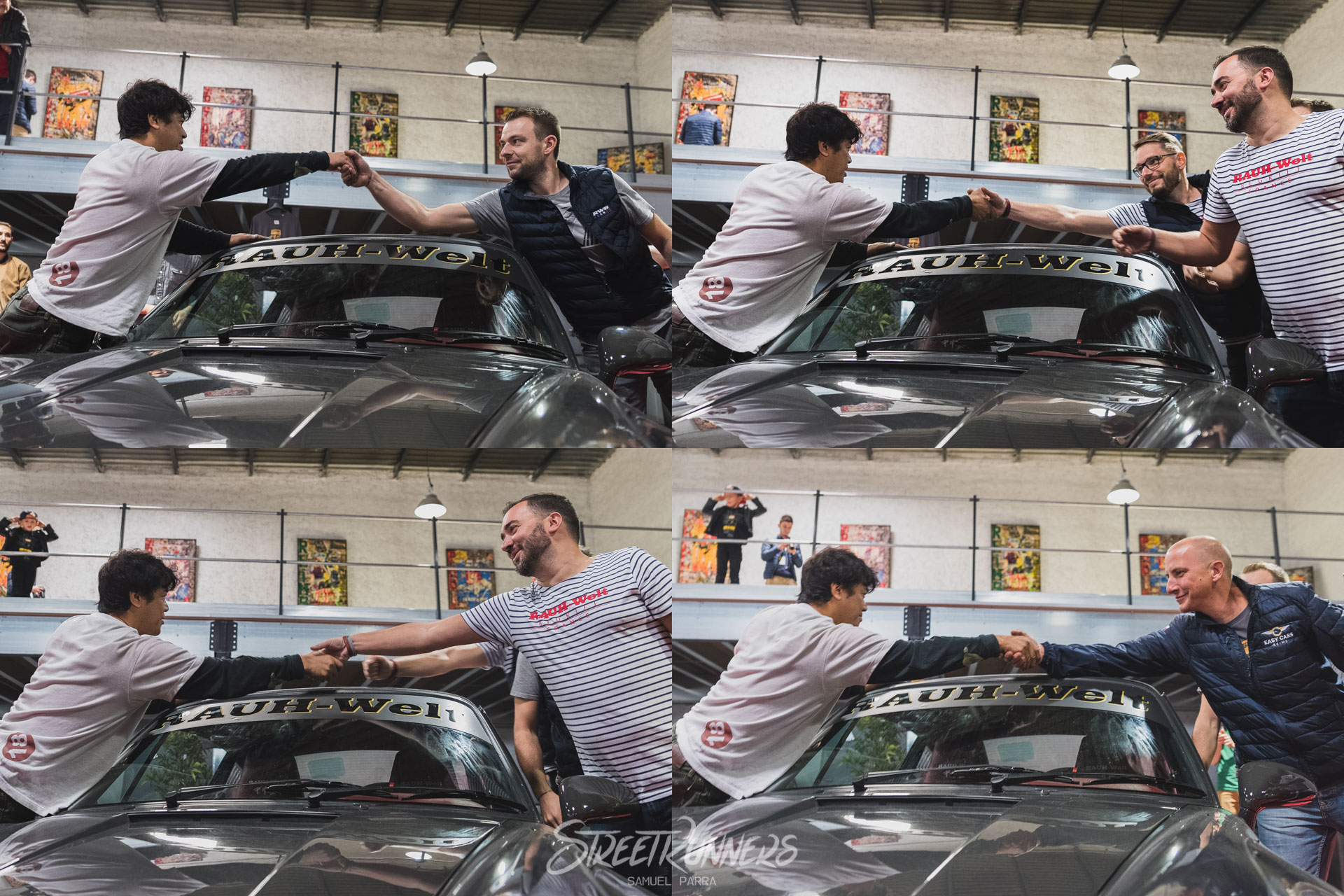 The car was finally done, and it was beautiful: the color, the wheels, the small details… everything on this RWB
had been chosen wisely. Especially the headlights, handmade by Adrian. From what I’ve heard, the visibility at night
with these cars is not very impressive but with the custom ones that were installed, a mix of angel eyes and xenon,
the 964 has not only acquired a much more modern look, but the light output is also now as good as a new car’s.
The car was finally done, and it was beautiful: the color, the wheels, the small details… everything on this RWB
had been chosen wisely. Especially the headlights, handmade by Adrian. From what I’ve heard, the visibility at night
with these cars is not very impressive but with the custom ones that were installed, a mix of angel eyes and xenon,
the 964 has not only acquired a much more modern look, but the light output is also now as good as a new car’s.
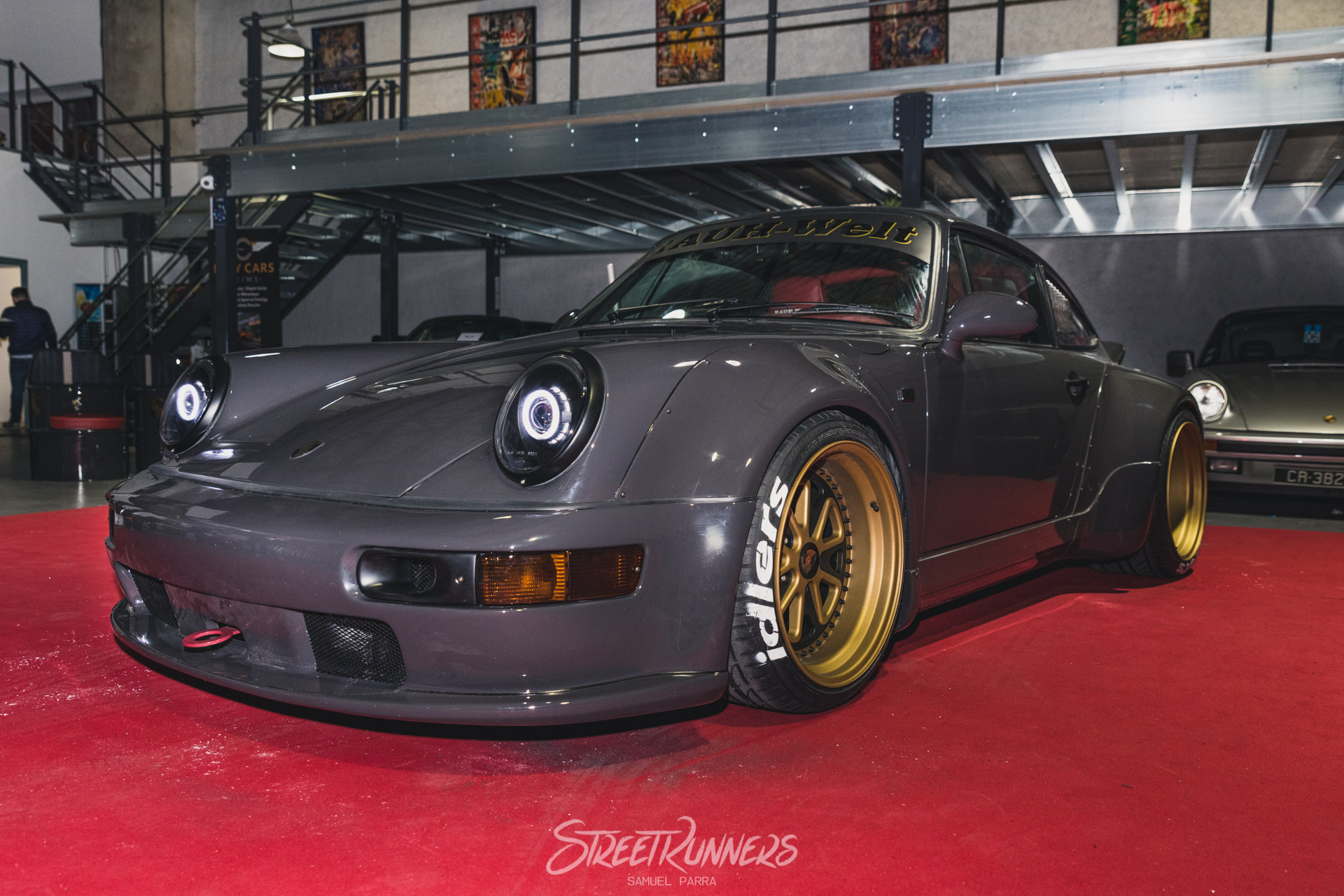 But as beautiful as the car was, it still hadn’t moved from where we first saw it two days prior, so once the clapping
stopped, the fences that had delimited the master’s workspace during the build were set aside and Nakai-san sat at the
place where he feels most comfortable: behind the wheel. He turned the key, the engine roared and drove towards the
street without looking back.
But as beautiful as the car was, it still hadn’t moved from where we first saw it two days prior, so once the clapping
stopped, the fences that had delimited the master’s workspace during the build were set aside and Nakai-san sat at the
place where he feels most comfortable: behind the wheel. He turned the key, the engine roared and drove towards the
street without looking back.
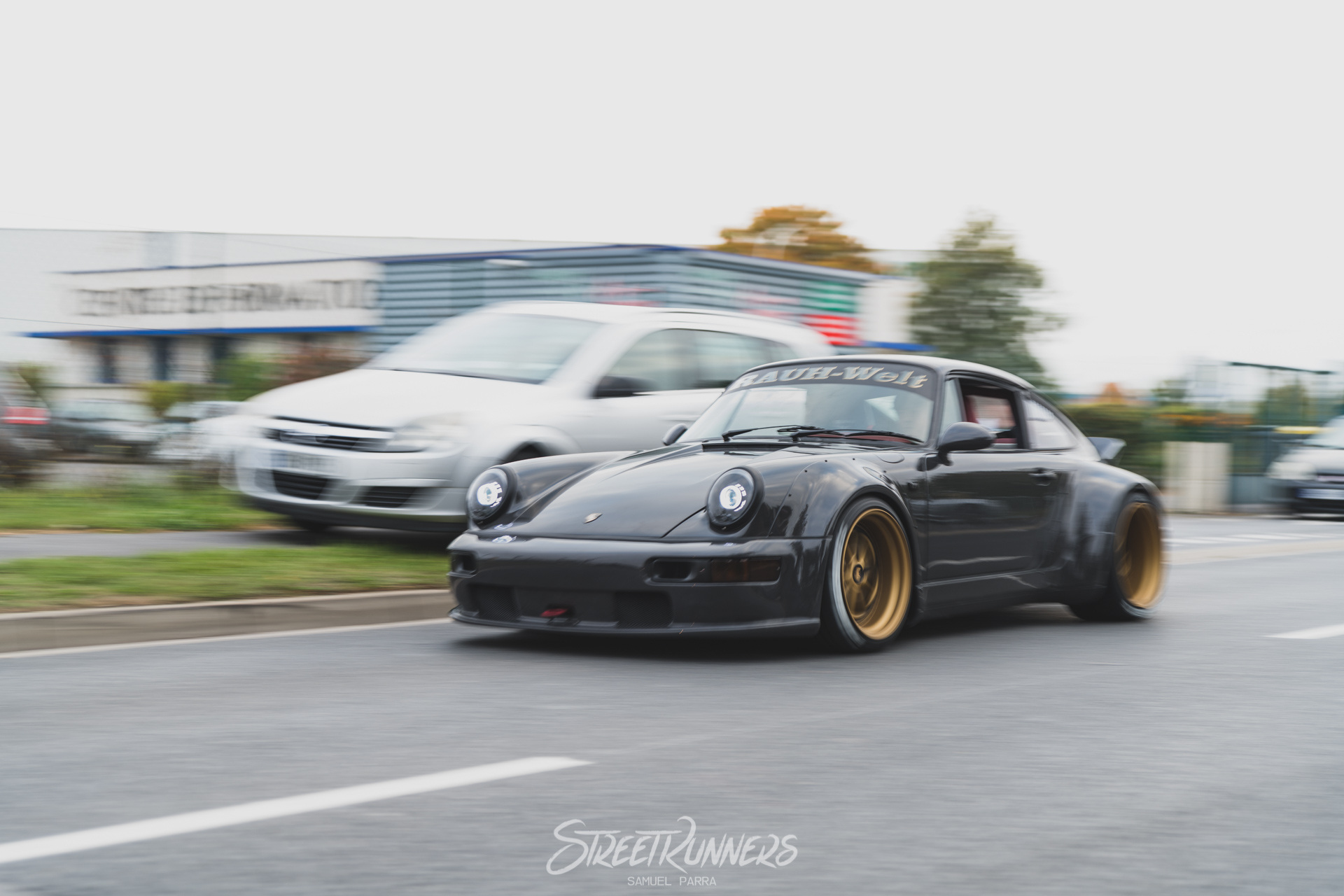
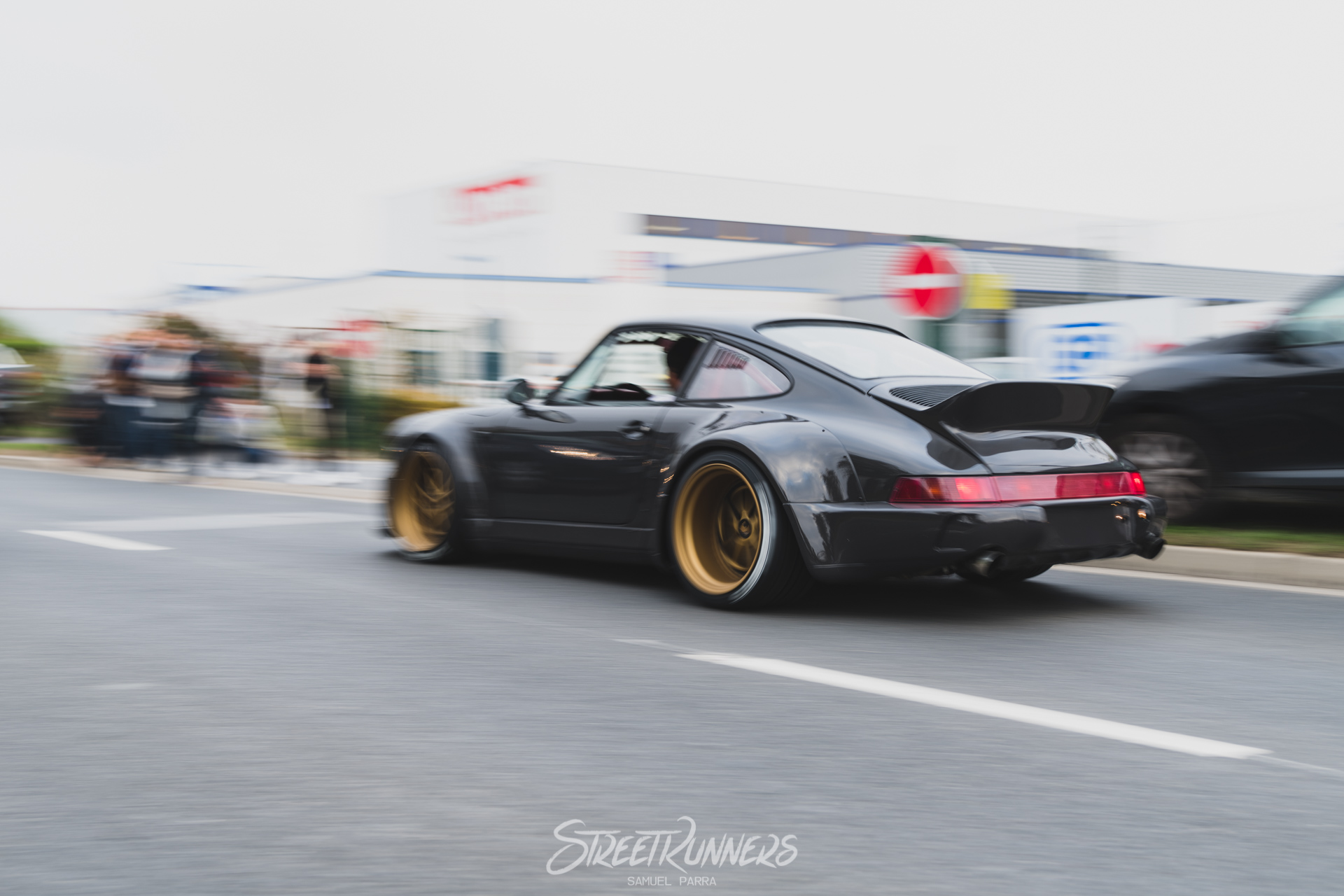 Under the sunlight is where Bourgogne (that’s how the car has been named, following the theme that the first
French RWB, Champagne, started) really shines. These are not cars to be stored under a cover in a garage. These cars
are meant to be driven and enjoyed. That’s what Nakai builds them for, and I really believe that this is the way they
look best: rolling on the streets.
Under the sunlight is where Bourgogne (that’s how the car has been named, following the theme that the first
French RWB, Champagne, started) really shines. These are not cars to be stored under a cover in a garage. These cars
are meant to be driven and enjoyed. That’s what Nakai builds them for, and I really believe that this is the way they
look best: rolling on the streets.
After Nakai-san had tested and driven Bourgogne _back to the workshop and everyone else had already left the place, Adrian called me: _“Sam, it’s your turn now” he said, while swinging the car keys in front of me. It was the first time that Adrian, who had spent countless hours working in order to have the car ready for when Nakai-san arrived, was going to drive his creature, and I was going to ride shotgun with him: just the two of us. Alone, no cameras, no one on the sides of the road, at night and with the windows rolled down. Just the way it should be.
That engine is incredible. It never stops pulling from idle to the red line, it feels like if it was N/A but it’s fast like a turbocharged one. It literally pushed me back into the seat. And that sound! I can still hear it in my head. If you’ve ever heard a 911, you’ll know what I mean when I say that it doesn’t sound like any other car. The engine sound joined the exhaust notes and the supercharger whining behind our heads to create a symphony in the French night that could be heard hundreds of meters around, I’m sure. We drove through a roundabout a little too fast and the rear end started sliding, but with a bit of gas and steering, the car recovered. It was addictive, and although the engine had just a few kilometers on the odometer since it had been rebuilt, Adrian couldn’t resist flooring it at the first tunnel that we came across during our ride. When we got out, he looked at me, joyfully said “This is RWB” and smiled. I bet he liked it, too.
